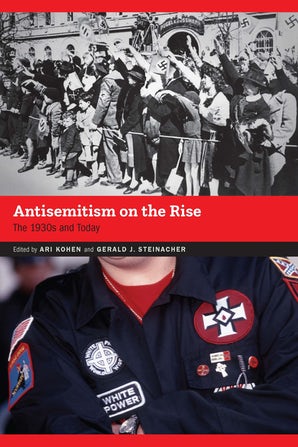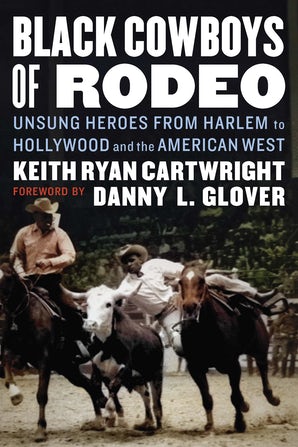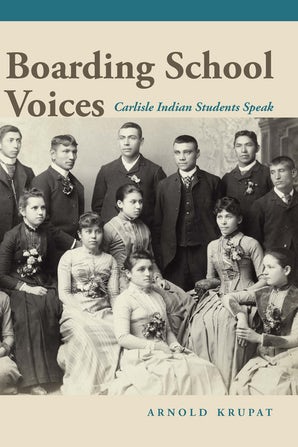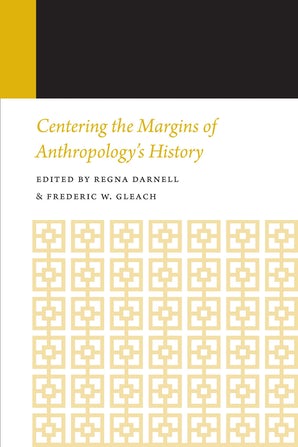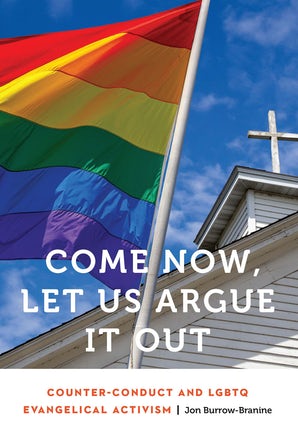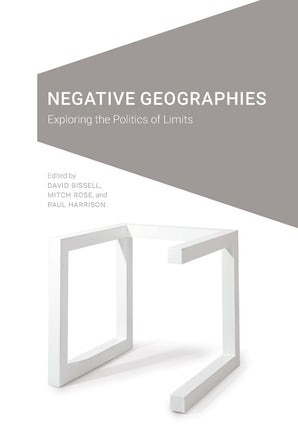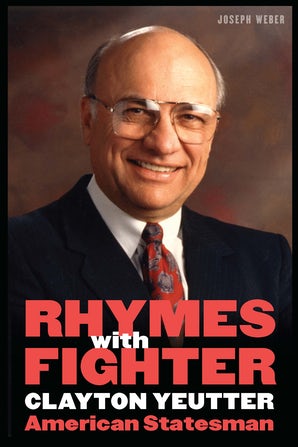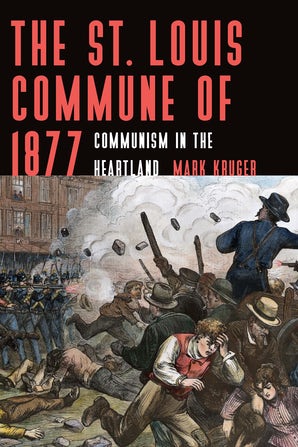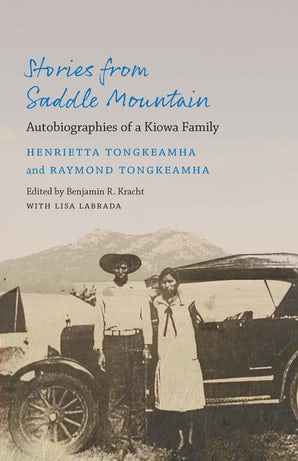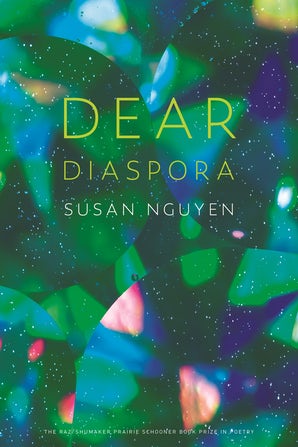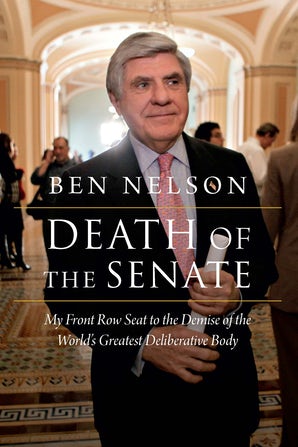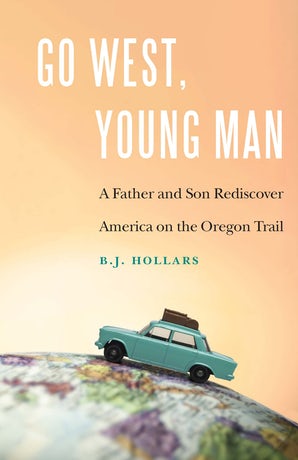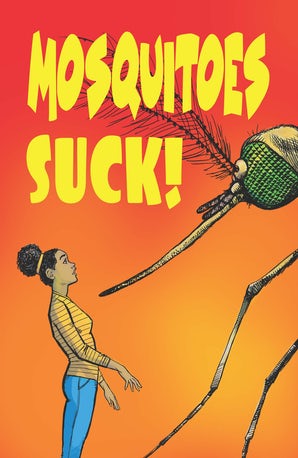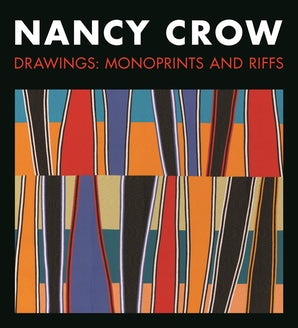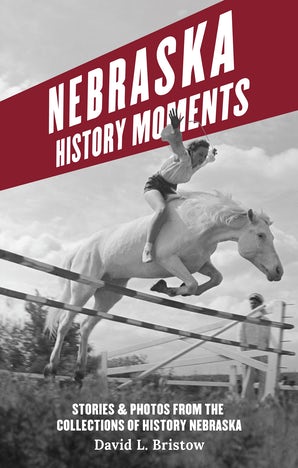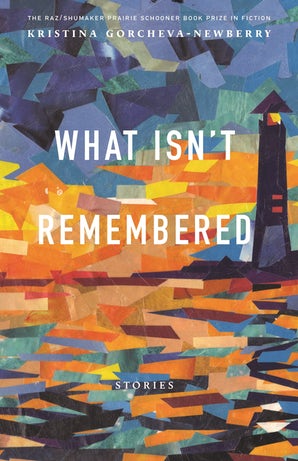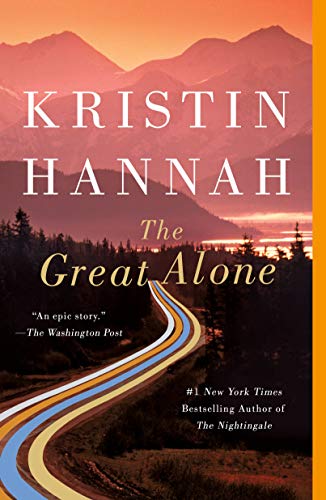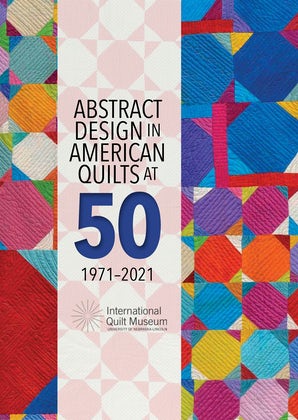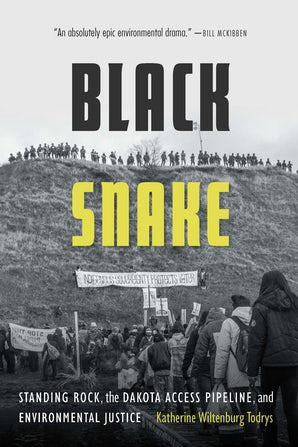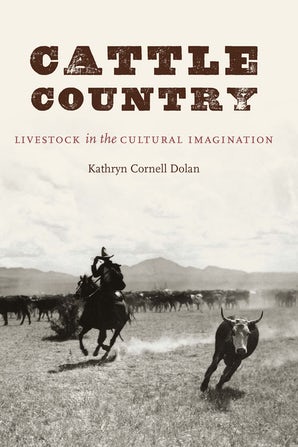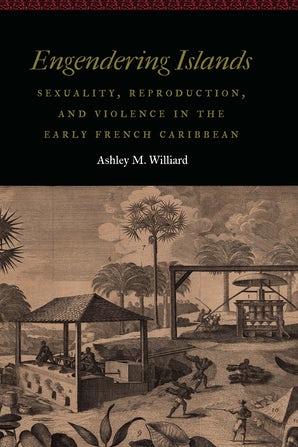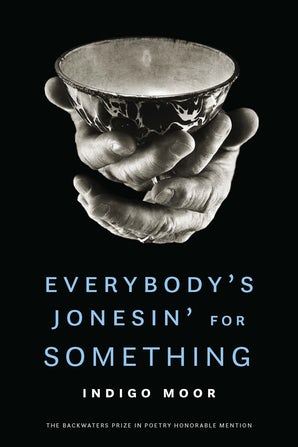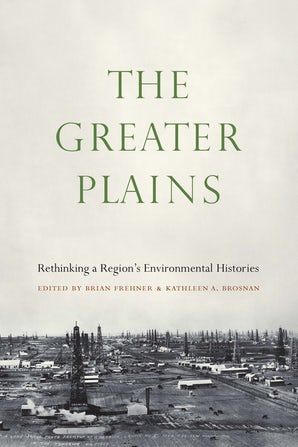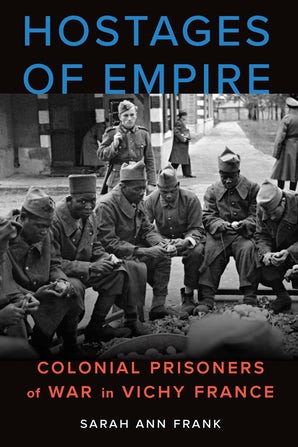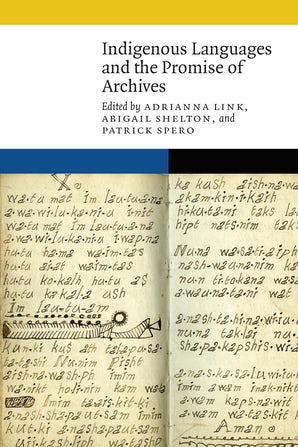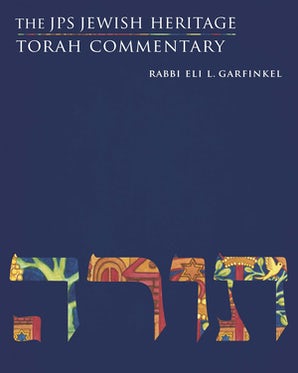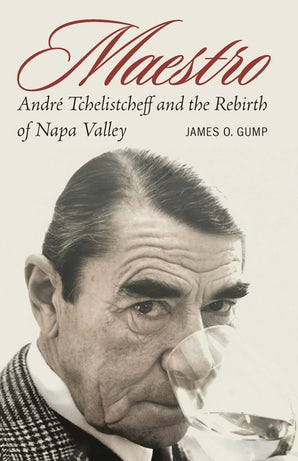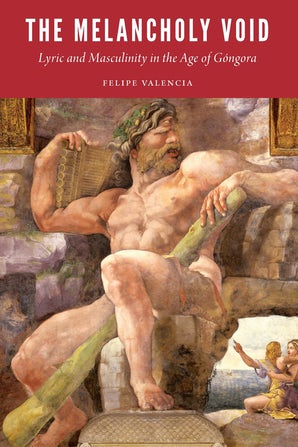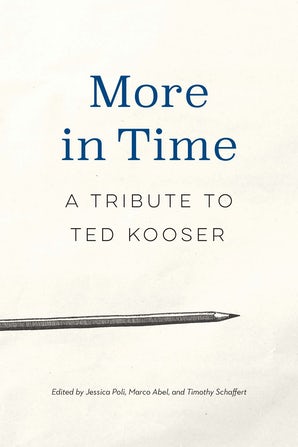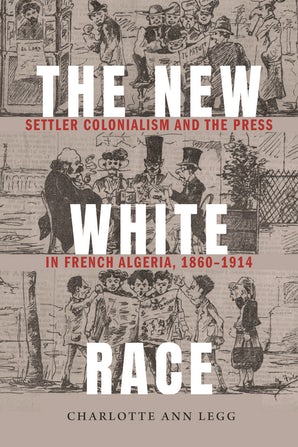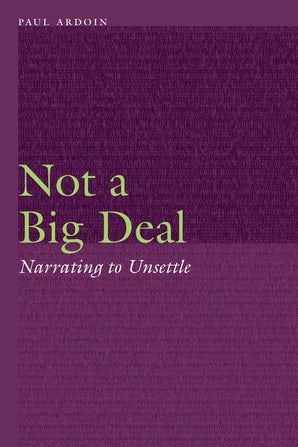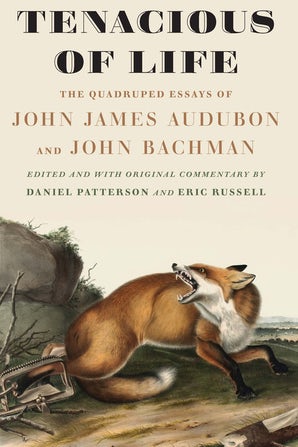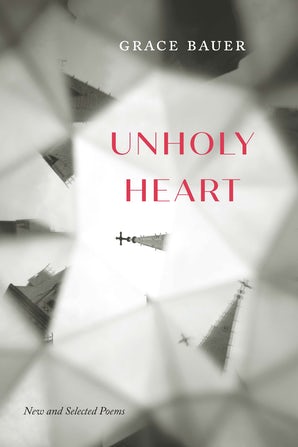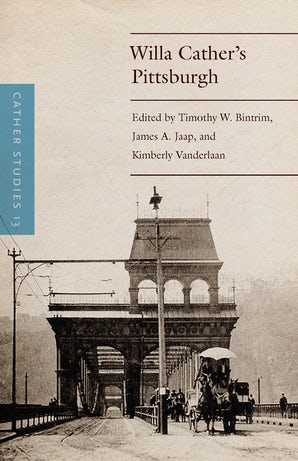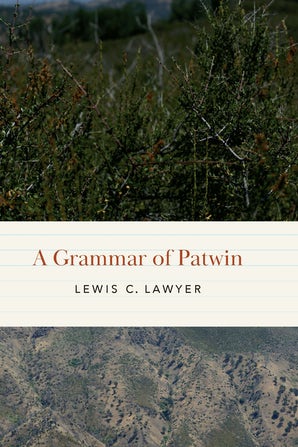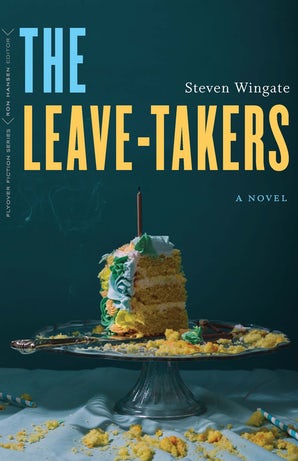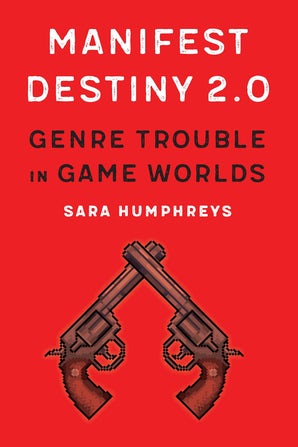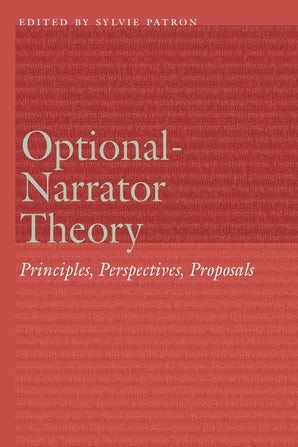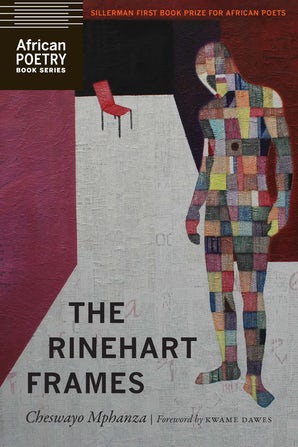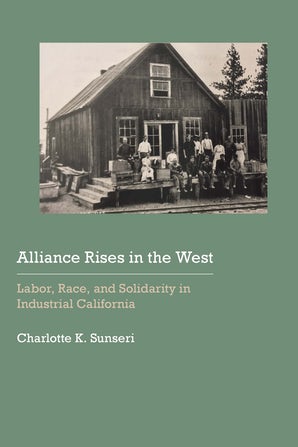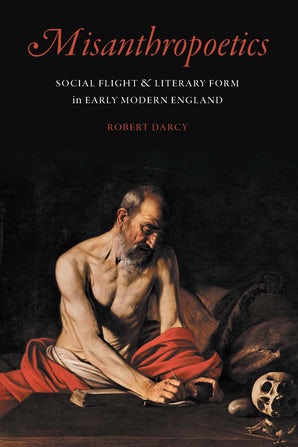Search the Blog
Categories
- Books & Reading
- Broadband Buzz
- Census
- Education & Training
- General
- Grants
- Information Resources
- Library Management
- Nebraska Center for the Book
- Nebraska Memories
- Now hiring @ your library
- Preservation
- Pretty Sweet Tech
- Programming
- Public Library Boards of Trustees
- Public Relations
- Talking Book & Braille Service (TBBS)
- Technology
- Uncategorized
- What's Up Doc / Govdocs
- Youth Services
Archives
Subscribe
Category Archives: Information Resources
Book Briefs: New University of Nebraska Press Books at the Nebraska Publications Clearinghouse
The Nebraska Publications Clearinghouse receives documents every month from all Nebraska state agencies, including the University of Nebraska Press (UNP). Each month we will be showcasing the UNP books that the Clearinghouse receives. UNP books, as well as all Nebraska state documents, are available for checkout by libraries and librarians for their patrons.
Here are the UNP books the Clearinghouse received in September and October 2021:
Antisemitism on the Rise : the 1930s and Today Edited by Ari Kohen and Gerald J. Steinacher ; Series: Contemporary Holocaust Studies
We live in uncertain and unsettling times. Tragically, today’s global culture is rife with violent bigotry, nationalism, and antisemitism. The rhetoric is not new; it is grounded in attitudes and values from the 1930s and the 1940s in Europe and the United States.
Antisemitism on the Rise is a collection of essays by some of the world’s leading experts, including Joseph Bendersky, Jean Cahan, R. Amy Elman, Leonard Greenspoon, and Jürgen Matthäus, regarding two key moments in antisemitic history: the interwar period and today. Ari Kohen and Gerald J. Steinacher have collected important examples on this crucial topic to illustrate new research findings and learning techniques that have become increasingly vital with the recent rise of white supremacist movements, many of which have a firm root in antisemitism.
Part 1 focuses on the antisemitic beliefs and ideas that were predominant during the 1930s and 1940s, while part 2 draws comparisons between this period and today, including examples of ways to teach others about contemporary antisemitism. The volume seeks to inform readers about the historical progression of antisemitism and in doing so asks readers to think about what is at stake and how to bridge the gap between research and teaching.
Black Cowboys of Rodeo : Unsung Heroes from Harlem to Hollywood and the American West by Keith Ryan Cartwright ; Forward by Danny L. Glover.
They ride horses, rope calves, buck broncos, ride and fight bulls, and even wrestle steers. They are Black cowboys, and the legacies of their pursuits intersect with those of America’s struggle for racial equality, human rights, and social justice. Keith Ryan Cartwright brings to life the stories of such pioneers as Cleo Hearn, the first Black cowboy to professionally rope in the Rodeo Cowboy Association; Myrtis Dightman, who became known as the Jackie Robinson of Rodeo after being the first Black cowboy to qualify for the National Finals Rodeo; and Tex Williams, the first Black cowboy to become a state high school rodeo champion in Texas.
Black Cowboys of Rodeo is a collection of one hundred years of stories, told by these revolutionary Black pioneers themselves and set against the backdrop of Reconstruction, Jim Crow, segregation, the civil rights movement, and eventually the integration of a racially divided country.
Boarding School Voices : Carlisle Indian Students Speak by Arnold Krupat
Boarding School Voices is both an anthology of mostly unpublished writing by former students of the Carlisle Indian Industrial School and a study of that writing. The boarding schools’ ethnocidal practices have become a metaphor for the worst evils of colonialism, a specifiable source for the ills that beset Native communities today. But the fuller story is one not only of suffering and pain, loss and abjection, but also of ingenious agency, creative syntheses, and unimagined adaptations.
Although tragic for many students, for others the Carlisle experience led to positive outcomes in their lives. Some published short pieces in the Carlisle newspapers and others sent letters and photos to the school over the years. Arnold Krupat transcribes selections from the letters of these former students literally and unedited, emphasizing their evocative language and what they tell of themselves and their home communities, and the perspectives they offer on a wider American world. Their sense of themselves and their worldview provide detailed insights into what was abstractly and vaguely referred to as “the Indian question.” These former students were the oxymoron Carlisle superintendent Richard Henry Pratt could not imagine and never comprehended: they were Carlisle Indians.
The Burglar’s Christmas by Willa Cather
The Burglar’s Christmas was originally published near the beginning of Willa Cather’s writing career in 1896 under the pseudonym of Elizabeth L. Seymour. The story follows William Crawford on the cold streets of Chicago as he contemplates the multiple failures plaguing his life, including his time at college and careers in journalism, real estate, and performing. Distraught, he tries one more role: thief. Attempting to burgle a residence and caught in the act by the lady of the house, William must come to terms with the choices that led him to that moment. Cather provides a heartwarming short story of redemption and love at Christmas, a timely reminder that kindness is in everyone, just waiting to be uncovered.
Centering the Margins of Anthropology’s History Edited by Regna Darnell and Frederic W. Gleach ; Series: Histories of Anthropology Annual, v. 14.
The series Histories of Anthropology Annual presents diverse perspectives on the discipline’s history within a global context, with a goal of increasing the awareness and use of historical approaches in teaching, learning, and conducting anthropology. The series includes critical, comparative, analytical, and narrative studies involving all aspects and subfields of anthropology.
Volume 14, Centering the Margins of Anthropology’s History, focuses on the conscious recognition of margins and suggests it is time to bring the margins to the center, both in terms of a changing theoretical openness and a supporting body of scholarship—if not to problematize the very dichotomy of center and margins itself.
The essays explore two major themes of anthropology’s margins. First, anthropologists and historians have long sought out marginalized and forgotten ancestors, arguing for their present-day relevance and offering explanations for the lack of attention to their contributions to theory, analysis, methods, and findings. Second, anthropologists and their historians have explored a range of genres to present their results in provocative and open-ended formats. This volume closes with an experimental essay that offers a dynamic, multifaceted perspective that captures one of the dominant (if sometimes marginalized) voices in history of anthropology. Steven O. Murray’s career developed at the institutional margins of several academic disciplines and activist discourses, but his distinctive voice has been, and will remain, at the center of our history.
Come Now, Let Us Argue It Out : Counter-Conduct and LGBTQ Evangelical Activism by Jon Burrow-Branine ; Series: Anthropology of Contemporary North America
Come Now, Let Us Argue It Out provides a look into a community that challenges common narratives about what it means to be LGBTQ and Christian in the contemporary United States. Based on his participant-observation fieldwork with a faith-based organization called the Reformation Project, Jon Burrow-Branine provides an ethnography of how some LGBTQ and LGBTQ-supportive Christians negotiate identity and difference and work to create change in evangelicalism.
Come Now, Let Us Argue It Out tells the story of how this activism can be understood as a community of counter-conduct. Drawing on a concept proposed by the philosopher and historian Michel Foucault, Burrow-Branine documents everyday moments of agency and resistance that have the potential to form new politics, ethics, and ways of being as individuals in this community navigate the exclusionary politics of mainstream evangelical institutions, culture, and theology.
More broadly, Burrow-Branine considers the community’s ongoing conversation about what it means to be LGBTQ and a Christian, grappling with the politics of inclusion and representation in LGBTQ evangelical activism itself.
The Front by Journey Herbeck ; Series: Flyover Fiction
For one family living on the very western edge of the Great Plains, life runs parallel to the forces that had always endangered its existence. There was a price to obtain this parallel life, of course, but the family had paid it and for once found a way to survive. They had a little water. They had a little food. They had a little work. They were fine—until they weren’t.
Taking place in the span of twenty-four hours, The Front follows a man and his nine-year-old niece as they try to escape the apocalyptic circumstances that have come to their home. Traveling north through outbreaking war, the pair navigate the disintegrating balance between rival powers. As new lines are drawn, the neutral spot their family had come to occupy is no longer recognized by either side, and the only chance for safety is to try to cross the Northern Line.
Jump Shooting to a Higher Degree : My Basketball Odyssey by Sheldon Anderson
Jump Shooting to a Higher Degree chronicles Sheldon Anderson’s basketball career from grade school in small-town Moorhead, Minnesota, in the 1960s, to inner-city high school and college ball in Minneapolis, to a professional career in West Germany, and finally to communist Poland, where he did PhD research while on a basketball junket behind the Iron Curtain in the late 1980s.
Because he was the only American player in the league at the time, and with help from a Polish scholar, Anderson was one of the first Western scholars to gain access to Communist Party documents. He’s also likely the only American scholar to have funded his research by playing semi-pro basketball in a communist country.
Jump Shooting to a Higher Degree is much more than a basketball story. Anderson provides insights into the everyday lives of people on either side of the Iron Curtain, such as the English coach he played for in West Germany, an elderly woman he visited many times in East Germany, and a sailmaker’s family he lived with in Warsaw. He reflects on German, Polish, and Cold War history, providing a commentary on the times and the places where he lived and played, and the importance of basketball along the way.
The Light of Earth : Reflections on a Life in Space, by Al Worden with Francis French ; Series: Outward Odyssey : A People’s History of Spaceflight
Apollo 15 command module pilot Al Worden was one of the highest-profile personalities among the Apollo astronauts, renowned for his outspokenness and potent views but also recognized as a warm and well-liked person who devoted much of his life after retiring from NASA to sharing his spaceflight experiences.
Worden had nearly finished writing this book before his passing in 2020 at the age of eighty-eight. Coauthored with spaceflight historian Francis French, The Light of Earth is Worden’s wide-ranging look at the greatest-ever scientific undertaking, in which he was privileged to be a leading participant.
Here Worden gives readers his refreshingly candid opinions on the space program, flying to the moon, and the people involved in the Apollo and later shuttle programs, as well as sharing hard-hitting reflections on the space shuttle program, the agonies and extraordinary sights and delights of being a NASA Apollo astronaut, and the space program’s triumphs and failures.
Worden delves into areas of personal grief that reveal the noble and truly human side of the space program’s earliest years. He does not hold back when discussing the shocking deaths of his fellow astronauts in the three major tragedies that struck the space agency, nor does he shy away from sharing his personal feelings about fellow Apollo astronauts including Neil Armstrong and Buzz Aldrin. Worden was known as a charismatic speaker and one of the most thoughtful Apollo astronauts. His candid, entertaining, and unique perspective in The Light of Earth will captivate and surprise.
Long Rules : An Essay in Verse by Nathaniel Perry ; Series: The Backwaters Prize in Poetry
A book-length poem in six sections, Long Rules takes readers to five Trappist monasteries in the southeastern United States to consider the intersections of solitude, family, music, and landscape. Its lines unspool in a loose and echoing blank verse that investigates monastic rules, sunlight, Saint Basil, turnips, Thomas Merton, saddle-backed caterpillars, John Prine, fatherhood, and everything in between. Looking inside and outside the self, Perry asks, what, or whom, are we serving? Winner of the Backwaters Prize in Poetry, this essay in verse contemplates the meaning of solitude and its contemporary ramifications in a time of uncertainty.
A Long Voyage to the Moon : The Life of Naval Aviator and Apollo 17 Astronaut Ron Evans by Geoffrey Bowman ; Series: Outward Odyssey : A People’s History of Spaceflight
As command module pilot of Apollo 17, the last crewed flight to the moon, Ron Evans combined precision flying and painstaking geological observation with moments of delight and enthusiasm. On his way to the launchpad, he literally jumped for joy in his spacesuit. Emerging from the command module to conduct his crucial spacewalk, he exclaimed, “Hot diggity dog!” and waved a greeting to his family. As a patriotic American in charge of command module America, Evans was nicknamed “Captain America” by his fellow crew members.
Born in 1933 in St. Francis, Kansas, Evans distinguished himself academically and athletically in school, earned degrees in electrical engineering and aeronautical engineering, and became a naval aviator and a combat flight instructor. He was one of the few astronauts who served in combat during the Vietnam War, flying more than a hundred missions off the deck of the USS Ticonderoga, the same aircraft carrier that would recover him and his fellow astronauts after the splashdown of Apollo 17.
Evans’s astronaut career spans the Apollo missions and beyond. He served on the support crews for 1, 7, and 11 and on the Apollo 14 backup crew before being selected for Apollo 17 and flying on the final moon mission in 1972. He next trained with Soviet cosmonauts as backup command module pilot for the 1975 Apollo-Soyuz mission and carried out early work on the space shuttle program. Evans then left NASA to pursue a business career. He died suddenly in 1990 at the age of fifty-six.
Negative Geographies : Exploring the Politics of Limits Edited by David Bissell, Mitch Rose, and Paul Harrison ; Series: Cultural Geographies + Rewriting the Earth
Negative Geographies is the first edited collection to chart the political, conceptual, and ethical consequences of how the underexplored problem of the negative might be posed for contemporary cultural geography. Using a variety of case studies and empirical investigations, these chapters consider how the negative, through annihilations, gaps, ruptures, and tears, can work within or against the terms of affirmationism. The collection opens up new avenues through which key problems of cultural geography might be differently posed and points to the ways that it might be possible and desirable to think, theorize, and exemplify negation.
Rhymes With Fighter : Clayton Yeutter, American Statesman, by Joseph Weber
From a hardscrabble childhood in the Great Depression on the dusty plains of rural Nebraska, Clayton Yeutter (1930–2017) rose to work for four U.S. presidents, serving in the cabinets of two of them. His challenge, posed by one of President Ronald Reagan’s aides, was this: go and change the world. As U.S. trade representative he did just that, opening the global trading arena with bold efforts that led to NAFTA, the creation of the World Trade Organization, and extraordinary growth in cross-border business. Today’s global trading regime began with Yeutter.
A distinguished lawyer with a doctorate in economics, Yeutter also had deep business experience leading the giant futures trading organization the Chicago Mercantile Exchange, now called the CME Group. But he never forgot his family’s farm roots, and those roots led him to another top job as President George H. W. Bush’s secretary of agriculture.
Yeutter’s intellectual firepower, paired with an engaging personality and a midwesterner’s beaming smile, made friends and found common ground with leaders and trade officials worldwide. Although a loyal GOP leader who served as counselor to a president and head of the Republican National Committee, Yeutter was a moderate who had admirers on both sides of the aisle.
This is his life story.
The St. Louis Commune of 1877 : Communism in the Heartland by Mark Kruger
Following the Civil War, large corporations emerged in the United States and became intent on maximizing their power and profits at all costs. Political corruption permeated American society as those corporate entities grew and spread across the country, leaving bribery and exploitation in their wake. This alliance between corporate America and the political class came to a screeching halt during the Great Railroad Strike of 1877, when the U.S. workers in the railroad, mining, canal, and manufacturing industries called a general strike against monopoly capitalism and brought the country to an economic standstill.
In The St. Louis Commune of 1877 Mark Kruger tells the riveting story of how workers assumed political control in St. Louis, Missouri. Kruger examines the roots of the St. Louis Commune—focusing on the 1848 German revolution, the Paris Commune, and the First International. Not only was 1877 the first instance of a general strike in U.S. history; it was also the first time workers took control of a major American city and the first time a city was ruled by a communist party.
Stories From Saddle Mountain : Autobiographies of a Kiowa Family by Henrietta Tongkeamha and Raymond Tongkeamha ; Series: American Indian Lives
Stories from Saddle Mountain recounts family stories that connected the Tongkeamhas, a Kiowa family, to the Saddle Mountain community for more than a century. Henrietta Apayyat (1912–93) grew up and married near Saddle Mountain, where she and her husband raised five sons and five daughters. She began penning her memoirs in 1968, including accounts about a Peyote meeting, revivals and Christmas encampments at Saddle Mountain Church, subsistence activities, and attending boarding schools and public schools.
When not in school, Henrietta spent much of her childhood and adolescence close to home, working and occasionally traveling to neighboring towns with her grandparents, whereas her son Raymond Tongkeamha left frequently and wandered farther. Both experienced the transformation from having no indoor plumbing or electricity to having radios, televisions, and JCPenney. Together, their autobiographies illuminate dynamic changes and steadfast traditions in twentieth-century Kiowa life in the Saddle Mountain countryside.
This Jade World by Ira Sukrungruang ; Series: American Lives
This Jade World centers on a Thai American who has gone through a series of life changes. Ira Sukrungruang married young to an older poet. On their twelfth anniversary, he received a letter asking for a divorce, sending him into a despairing spiral. How would he define himself when he was suddenly without the person who shaped and helped mold him into the person he is?
After all these years, he asked himself what he wanted and found no answer. He did not even know what wanting meant. And so, in the year between his annual visits to Thailand to see his family, he gave in to urges, both physical and emotional; found comfort in the body, many bodies; fought off the impulse to disappear, to vanish; until he arrived at some modicum of understanding. During this time, he sought to obliterate the stereotype of the sexless Asian man and began to imagine a new life with new possibilities.
Through ancient temples and the lush greenery of Thailand, to the confines of a stranger’s bed and a devouring couch, This Jade World chronicles a year of mishap, exploration and experimentation, self-discovery, and eventually, healing. It questions the very nature of love and heartbreak, uncovering the vulnerability of being human.
The Track the Whales Make : New and Selected Poems by Marjorie Saiser, Introduction by Ted Kooser ; Series: Ted Kooser Contemporary Poetry
Marjorie Saiser’s strong, clear language makes the reader feel at home in her poems. Dealing with all the ways love goes right and wrong, this collection honors the challenges of holding firm to who we really are, as well as our connections to the natural world.
The Track the Whales Make includes poems from Saiser’s seven previous books, along with new ones. Her poetry originates from the everyday things we might overlook in the hurry of our daily routines, giving us a chance to stop and appreciate the little things, while wrapped in her comforting diction. Because the poems come from ordinary life, there is humor alongside happiness and sadness, the mixed bag we survive or create, day by day.
Call for Speakers: Big Talk From Small Libraries 2022

The Call for Speakers for Big Talk From Small Libraries 2022 is now open!
This free one-day online conference is aimed at librarians from small libraries; the smaller the better! We are looking for speakers from small libraries or speakers who directly work with small libraries. Small libraries of all types – public, academic, school, museum, special, etc. – are encouraged to submit a proposal. We’re looking for seven 50-minute presentations and four 10-minute “lightning round” presentations.
Do you offer a service or program at your small library that other librarians might like to hear about? Have you implemented a new (or old) technology, hosted an event, partnered with others in your community, or just done something really cool? The Big Talk From Small Libraries online conference gives you the opportunity to share what you’ve done, while learning what your colleagues in other small libraries are doing.
Here are some possible topics to get you thinking:
- Unique Libraries
- Special Collections
- New buildings
- Fundraising
- Improved Workflows
- Staff Development
- Advocacy Efforts
- Community Partnerships
- That great thing you’re doing at your library!
Submit your proposal by Friday, January 14, 2022.
Speakers from libraries serving fewer than 10,000 people will be preferred, but presentations from libraries with larger service populations will be considered.
Big Talk From Small Libraries 2022 will be held on Friday, February 25, 2022 between 8:45 a.m. and 5:00 p.m. (CT) via the GoToWebinar online meeting service. Speakers will present their programs from their own desktops. The schedule will accommodate speakers’ time-zones.
This conference is organized and hosted by the Nebraska Library Commission and is co-sponsored by the Association for Rural & Small Libraries.
Photo by Patrick Fore on Unsplash
Pandemic Resources for Libraries
The COVID-19 pandemic has waxed and waned, but it is not over. Fortunately, we know much more now than we did in early 2020 – no more sanitizing groceries! On the other hand, this ever-increasing glut of information (and misinformation) can be hard to navigate. We have rounded up some resources on identifying accurate information and other topics related to the ongoing COVID-19 pandemic: http://nlc.nebraska.gov/libman/navigating_pandemic_information.aspx. As Mr. Rogers said, “look for the helpers. You will always find people who are helping”. There is no better place to turn for information literacy help than your local public library!
We’ve also been keeping track of the latest guidance and resources for libraries, businesses, and families. You can find more on our pandemic resource page: http://nlc.nebraska.gov/libman/pandemic.aspx.
We are always updating our pages, so if you notice that we are missing a crucial resource, please reach out to us.
Posted in General, Information Resources, Library Management
Tagged closures, coronavirus, covid-19, pandemic, reopening
2 Comments
Book Briefs: New University of Nebraska Press Books at the Nebraska Publications Clearinghouse
The Nebraska Publications Clearinghouse receives documents every month from all Nebraska state agencies, including the University of Nebraska Press (UNP). Each month we will be showcasing the UNP books that the Clearinghouse receives. UNP books, as well as all Nebraska state
documents, are available for checkout by libraries and librarians for their patrons.Here are the UNP books the Clearinghouse received in July and August 2021:
C’RONA Pandemic Comics, by Bob Hall, Judy Diamond, Liz VanWormer, and Judi M. Gaiashkibos.
C’RONA Pandemic Comics is a collection of short comics and essays developed to help youth understand the complexities of living through a viral pandemic. Each focuses on a different theme: the biology of the COVID-19 virus; the relationship of wild animals, particularly bats, to the pandemic; and the impact of the pandemic on tribal communities. Created by a group of artists, educators, tribe members, and scientists, this comic book provides an engaging way to learn about the COVID-19 pandemic from a cast of fictional characters—a parrot, a fox, a goat, a bat, a mouse, a coyote, and a ghost.
DEAR DIASPORA, by Susan Nguyen. Series: The Raz/Shumaker Prairie Schooner Book Prize in Poetry.
Dear Diaspora is an unapologetic reckoning with history, memory, and grief. Parting the weeds on a small American town, this collection sheds light on the intersections of girlhood and diaspora. The poems introduce us to Suzi: ripping her leg hairs out with duct tape, praying for ecstasy during Sunday mass, dreaming up a language for buried familial trauma and discovering that such a language may not exist. Through a collage of lyric, documentary, and epistolary poems, we follow Suzi as she untangles intergenerational grief and her father’s disappearance while climbing trees to stare at the color green and wishing that she wore Lucy Liu’s freckles.
Winner of the Raz/Shumaker Prairie Schooner Book Prize in Poetry, Dear Diaspora scrutinizes our turning away from the trauma of our past and our complicity in its erasure. Suzi, caught between enjoying a rundown American adolescence and living with the inheritances of war, attempts to unravel her own inherited grief as she explores the multiplicities of identity and selfhood against the backdrop of the Vietnamese diaspora. In its deliberate interweaving of voices, Dear Diaspora explores Suzi’s journey while bringing to light other incarnations of the refugee experience.
DEATH OF THE SENATE : MY FRONT ROW SEAT TO THE DEMISE OF THE WORLD’S GREATEST DELIBERATIVE BODY, by Ben Nelson.
Something is rotten in the U.S. Senate, and the disease has been spreading for some time. But Ben Nelson, former U.S. senator from Nebraska, is not going to let the institution destroy itself without a fight. Death of the Senate is a clear-eyed look inside the Senate chamber and a brutally honest account of the current political reality.
In his two terms as a Democratic senator from the red state of Nebraska, Nelson positioned himself as a moderate broker between his more liberal and conservative colleagues and became a frontline player in the most consequential fights of the Bush and Obama years. His trusted centrist position gave him a unique perch from which to participate in some of the last great rounds of bipartisan cooperation, such as the “Gang of 14” that considered nominees for the federal bench—and passed over a young lawyer named Brett Kavanaugh for being too partisan.
Nelson learned early on that the key to any negotiation at any level is genuine trust. With humor, insight, and firsthand details, Nelson makes the case that the “heart of the deal” is critical and describes how he focused on this during his time in the Senate. As seen through the eyes of a centrist senator from the Great Plains, Nelson shows how and why the spirit of bipartisanship declined and offers solutions that can restore the Senate to one of the world’s most important legislative bodies.
DEER SEASON, by Erin Flanagan. Series: Flyover Fiction.
It’s the opening weekend of deer season in Gunthrum, Nebraska, in 1985, and Alma Costagan’s intellectually disabled farmhand, Hal Bullard, has gone hunting with some of the locals, leaving her in a huff. That same weekend, a teenage girl goes missing, and Hal returns with a flimsy story about the blood in his truck and a dent near the headlight. When the situation escalates from that of a missing girl to something more sinister, Alma and her husband are forced to confront what Hal might be capable of, as rumors fly and townspeople see Hal’s violent past in a new light.
A drama about the complicated relationships connecting the residents of a small-town farming community, Deer Season explores troubling questions about how far people will go to safeguard the ones they love and what it means to be a family.
EARLY MODERN TRAUMA : EUROPE AND THE ATLANTIC WORLD, Edited by Erin Peters and Cynthia Richards. Series: Early Modern Cultural Studies.
The term trauma refers to a wound or rupture that disorients, causing suffering and fear. Trauma theory has been heavily shaped by responses to modern catastrophes, and as such trauma is often seen as inherently linked to modernity. Yet psychological and cultural trauma as a result of distressing or disturbing experiences is a human phenomenon that has been recorded across time and cultures.
The long seventeenth century (1598–1715) has been described as a period of almost continuous warfare, and the sixteenth to eighteenth centuries saw the development of modern slavery, colonialism, and nationalism, and witnessed plagues, floods, and significant sociopolitical, economic, and religious transformation. In Early Modern Trauma editors Erin Peters and Cynthia Richards present a variety of ways early modern contemporaries understood and narrated their experiences. Studying accounts left by those who experienced extreme events increases our understanding of the contexts in which traumatic experiences have been constructed and interpreted over time and broadens our understanding of trauma theory beyond the contemporary Euro-American context while giving invaluable insights into some of the most pressing issues of today.
GO WEST, YOUNG MAN : A FATHER AND SON REDISCOVER AMERICA ON THE OREGON TRIAL, by B. J. Hollars.
At the sound of the bell on the last day of kindergarten, B.J. Hollars and his six-year-old son, Henry, hop in the car to strike out on a 2,500-mile road trip retracing the Oregon Trail. Their mission: to rediscover America, and Americans, along the way. Throughout their two-week adventure, they endure the usual setbacks (car trouble, inclement weather, and father-son fatigue), but their most compelling drama involves people, privilege, and their attempt to find common ground in an all-too-fractured country.
Writing in the footsteps of John Steinbeck’s Travels with Charley, Hollars picks up the trail with his son more than half a century later. Together they sidle up to a stool at every truck stop, camp by every creek, and roam the West. They encounter not only the beauty and heartbreak of America, but also the beauty and heartbreak of a father and son eager to make the most of their time together. From Chimney Rock to Independence Rock to the rocky coast of Oregon, they learn and relearn the devastating truth of America’s exploitative past, as well as their role within it.
Go West, Young Man recounts the author’s effort to teach his son the difficult realities of our nation’s founding while also reaffirming his faith in America today.
MOSQUITOES SUCK!, by Katherine Richardson Bruna, Sara Erickson, and Lyric Bertholomay.
Using a science comic format to engage readers of all ages, Mosquitoes SUCK! conveys essential information about mosquito biology, ecology, and disease transmission needed for community-based control efforts. Starting with a story of a dystopian mosquito-less future, Mosquitoes SUCK! travels back in time to depict the present-day work of a scientist in her lab and the curiosity of the students she works with as they learn about the history of mosquito-human interaction, science as an ever-evolving tool, and the need to balance cutting-edge preventative technologies with broader care for environmental stewardship.
NANCY CROW : DRAWINGS: MONOPRINTS AND RIFFS, by Nancy Crow.
Nancy Crow: Drawings: Monoprints and Riffs is a beautifully illustrated catalog showcasing the newest work of renowned artist Nancy Crow. Over the last decade Crow has transformed her quiltmaking by developing a unique monoprinting technique. Monoprinting on cotton fabric, she focuses on drawn lines, layered one upon another, that result in a complex visual tangle. The work in this series simultaneously produces both clarity and depth.
In her Riff and Drawing: Riff series, Crow has continued to explore her “drawing with fabric” approach. In these works Crow improvisationally cuts through layers of highly saturated hand-dyed fabrics, creating crisp forms with slight curves and undulations caused by subtle movements of her arm, which are then stitched together in dynamic compositions.
This catalog includes Crow’s descriptions of these innovative techniques as well as candid musings on her personal journey as a driven, passionate artist. In addition, Crow’s work is discussed in an essay by Jean Robertson, Chancellor’s Professor Emerita of Art History at the Herron School of Art and Design at Indiana University–Purdue University. Also featured is a foreword by David Hornung, professor of art and art history at Adelphi University, New York. The catalog accompanies a 2020 exhibition of Crow’s work at the International Quilt Museum, University of Nebraska–Lincoln.
NEBRASKA HISTORY MOMENTS : STORIES & PHOTOS FROM THE COLLECTIONS OF HISTORY NEBRASKA, by David L. Bristow.
Even a moment is enough for wonder and curiosity. Each page of this book uses a photo or artifact to tell a true story about the past, drawing from the extensive collections of History Nebraska. You can read it straight through, but it’s written to be browsed. Here are the turning points, disasters, amusements, causes and controversies, changing technologies, and scenes of daily life of the people who lived in a Nebraska that sometimes seems familiar to us, and sometimes seems a world away.
WHAT ISN’T REMEMBERED : STORIES, by Kristina Gorcheva-Newberry. Series: The Raz/Shumaker Prairies Schooner Book Prize in Fiction.
Winner of the Raz/Shumaker Prairie Schooner Book Prize in Fiction, the stories in What Isn’t Remembered explore the burden, the power, and the nature of love between people who often feel misplaced and estranged from their deepest selves and the world, where they cannot find a home. The characters yearn not only to redefine themselves and rebuild their relationships but also to recover lost loves—a parent, a child, a friend, a spouse, a partner.
A young man longs for his mother’s love while grieving the loss of his older brother. A mother’s affair sabotages her relationship with her daughter, causing a lifelong feud between the two. A divorced man struggles to come to terms with his failed marriage and his family’s genocidal past while trying to persuade his father to start cancer treatments. A high school girl feels responsible for the death of her best friend, and the guilt continues to haunt her decades later.
Evocative and lyrical, the tales in What Isn’t Remembered uncover complex events and emotions, as well as the unpredictable ways in which people adapt to what happens in their lives, finding solace from the most surprising and unexpected sources.
Friday Reads: The Great Alone, by Kristin Hannah
I’m not sure why I haven’t read Kristin Hannah’s books until recently, but once discovered, I am completely hooked. So far, I’ve read four of her books, loved all of them, but especially The Great Alone. It kept my interest so completely that I stayed up late reading, and when I couldn’t read it, I was listening to the audio version. It’s that good.
Alaska, 1974. Unpredictable. Unforgiving. Untamed.
For a family in crisis, the ultimate test of survival.
Ernt Allbright, a former POW, comes home from the Vietnam war a changed and volatile man. When he loses yet another job, he makes an impulsive decision: He will move his family north, to Alaska, where they will live off the grid in America’s last true frontier. Thirteen-year-old Leni, a girl coming of age in a tumultuous time, caught in the riptide of her parents’ passionate, stormy relationship, dares to hope that a new land will lead to a better future for her family. She is desperate for a place to belong. Her mother, Cora, will do anything and go anywhere for the man she loves, even if means following him into the unknown.
At first, Alaska seems to be the answer to their prayers. In a wild, remote corner of the state, they find a fiercely independent community of strong men and even stronger women. The long, sunlit days and the generosity of the locals make up for the Allbrights’ lack of preparation and dwindling resources. But as winter approaches and darkness descends on Alaska, Ernt’s fragile mental state deteriorates and the family begins to fracture. Soon the perils outside pale in comparison to threats from within. In their small cabin, covered in snow, blanketed in 18 hours of night, Leni and her mother learn the terrible truth: They are on their own. In the wild, there is no one to save them but themselves.
In this unforgettable portrait of human frailty and resilience, Kristin Hannah reveals the indomitable character of the modern American pioneer and the spirit of a vanishing Alaska – a place of incomparable beauty and danger.
The Great Alone is a daring, beautiful, stay-up-all-night audiobook about love and loss, the fight for survival, and the wildness that lives in both man and nature. (Audible)
What’s Up Doc? New State Agency Publications at the Nebraska Library Commission
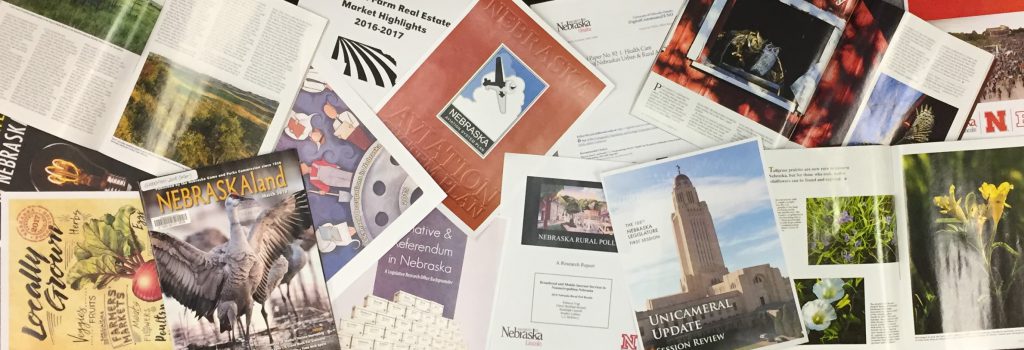
New state agency publications have been received at the Nebraska Library Commission for July through August, 2021. Included are reports from the Nebraska Department of Natural Resources,
the Nebraska Department of Economic Development, the Nebraska Department of Administrative Services, the University of Nebraska Agricultural Extension, and new books from the University of Nebraska Press, to name a few.
Most items, except the books from the University of Nebraska Press, are available for immediate viewing and printing by clicking on the highlighted link above, or directly in the .pdf below. You can read synopses of the books received from the University of Nebraska Press in the Book Briefs blogposts.
The Nebraska Legislature created the Nebraska Publications Clearinghouse in 1972 as a service of the Nebraska Library Commission. Its purpose is to collect, preserve, and provide access to all public information published by Nebraska state agencies. By law (State Statutes 51-411 to 51-413) all Nebraska state agencies are required to submit their published documents to the Clearinghouse. For more information, visit the Nebraska Publications Clearinghouse page, contact Mary Sauers, Government Information Services Librarian; or contact Bonnie Henzel, State Documents Staff Assistant.
2022 ARPA Youth Grants for Excellence Now Available

The Nebraska Library Commission (NLC) is pleased to announce the availability of Youth Grants for Excellence to legally-established public libraries, tribal libraries, and institutional libraries in Nebraska, through a competitive grant process. The purpose of the Youth Grants for Excellence is to make funding available specifically for innovative projects for children and young adults in Nebraska communities.
This year’s funding is provided from the American Rescue Plan Act (ARPA), as administered by the Institute of Museum and Library Services (IMLS). ARPA is the result of the federal stimulus bill passed by Congress. Nebraska has received a one-time award of $2,422,166. A portion of that amount will be available via these competitive grants.
Some of the usual rules and requirements for Youth Grants for Excellence will be suspended for this year only:
- No local match is required.
- All legally established public libraries are eligible, both accredited and unaccredited, as well as tribal libraries and State run institutions.
- Libraries will be able to use the grant funds for improving their collection (buy any books you feel you need), and to purchase AWE workstations or an equivalent item, Playaway Launchpad, computers, and furniture for the children’s or teen areas.
Online applications will be accepted through 11:59 PM (CT) on October 7, 2021 and recipients will be notified of funding by October 29, 2021.
Visit the grant webpage for the full grant details and the online application form.
And to learn more, sign up for the September 1 NCompass Live webinar, NLC Grants for 2022.
2022 ARPA Library Improvement Grants Now Available
The Nebraska Library Commission (NLC) is pleased to announce the availability of Library Improvement Grants to legally-established public libraries, tribal libraries, and institutional libraries in Nebraska, through a competitive grant process. The purpose of the Library Improvement Grants is to facilitate growth and development of library programs and services, by supplementing local funding with federal funds designated for these purposes.
This year’s funding is provided from the American Rescue Plan Act (ARPA), as administered by the Institute of Museum and Library Services (IMLS). ARPA is the result of the federal stimulus bill passed by Congress. Nebraska has received a one-time award of $2,422,166. A portion of that amount will be available via these competitive grants.
Some of the usual rules and requirements for Library Improvement Grants will be suspended for this year only:
- No local match is required.
- All legally established public libraries are eligible, both accredited and unaccredited, as well as tribal libraries and State run institutions.
Online applications will be accepted through 11:59 PM (CT) on October 7, 2021 and recipients will be notified of funding by October 29, 2021.
Visit the grant webpage for the full grant details and the online application form.
And to learn more, sign up for the September 1 NCompass Live webinar, NLC Grants for 2022.
What’s Up Doc? New State Agency Publications at the Nebraska Library Commission

New state agency publications have been received at the Nebraska Library Commission for March through June, 2021. Included are reports from the Nebraska Auditor of Public Accounts, History Nebraska, the Nebraska Department of Natural Resources, the Nebraska Legislature, and new books from the University of Nebraska Press, to name a few.
Most items, except the books from the University of Nebraska Press, are available for immediate viewing and printing by clicking on the highlighted link above, or directly in the .pdf below. You can read synopses of the books received from the University of Nebraska Press in the Book Briefs blogposts.
The Nebraska Legislature created the Nebraska Publications Clearinghouse in 1972, a service of the Nebraska Library Commission. Its purpose is to collect, preserve, and provide access to all public information published by Nebraska state agencies. By law (State Statutes 51-411 to 51-413) all Nebraska state agencies are required to submit their published documents to the Clearinghouse. For more information, visit the Nebraska Publications Clearinghouse page, contact Mary Sauers, Government Information Services Librarian; or contact Bonnie Henzel, State Documents Staff Assistant.
Book Briefs: New University of Nebraska Press Books at the Nebraska Publications Clearinghouse
The Nebraska Publications Clearinghouse receives documents every month from all Nebraska state agencies, including the University of Nebraska Press (UNP). Each month we will be showcasing the UNP books that the Clearinghouse receives. UNP books, as well as all Nebraska state documents, are available for checkout by libraries and librarians for their patrons.
Here are the University of Nebraska Press books received in May and June 2021:
Abstract Design in American Quilts at 50 : 1971-2021
Edited by Marin F. Hanson ; Contributing authors: Jonathan Holstein, Carolyn Ducey, Sandra Sider, Jonathan Gregory, Nao Nomura, and Marin F. Hanson
Fifty years after its debut, the exhibition Abstract Design in American Quilts is remembered as a pivotal moment in the intersecting histories of art, craft, and design. Installed at New York’s Whitney Museum of American Art in 1971, the exhibition presented traditional American pieced quilts on walls more commonly used to display modern art such as abstract expressionist paintings. The exhibition, curated by Jonathan Holstein and Gail van der Hoof from their own collection, unexpectedly struck a chord with museumgoers and art critics alike, breaking attendance records and subsequently traveling to museums across the United States, Europe, and Japan.
With Abstract Design in American Quilts at 50, an exhibition series that includes an installation of the original quilt group, the International Quilt Museum at the University of Nebraska–Lincoln reexamines the half-century impact of this watershed exhibition. In five essays, leading quilt scholars assess the areas upon which the exhibition, in its various iterations, had its greatest impact, most notably the growth of quiltmaking across the United States and in art circles. The essays also discuss broader cultural phenomena that produced an environment in which quilts and other forms of material culture could be viewed and valued in new ways.
Black Snake : Standing Rock, the Dakota Access Pipeline, and Environmental Justice
By Katherine Wiltenburg Todrys
The controversial Dakota Access Pipeline (DAPL) made headlines around the world in 2016. Supporters called the pipeline key to safely transporting American oil from the Bakken oil fields of the northern plains to markets nationwide, essential to both national security and prosperity. Native activists named it the “black snake,” referring to an ancient prophecy about a terrible snake that would one day devour the earth. Activists rallied near the Standing Rock Reservation in North Dakota for months in opposition to DAPL, winning an unprecedented but temporary victory before the federal government ultimately permitted the pipeline. Oil began flowing on June 1, 2017.
The water protector camps drew global support and united more than three hundred tribes in perhaps the largest Native alliance in U.S. history. While it faced violent opposition, the peaceful movement against DAPL has become one of the most crucial human rights movements of our time.
Black Snake is the story of four leaders—LaDonna Allard, Jasilyn Charger, Lisa DeVille, and Kandi White—and their fight against the pipeline. It is the story of Native nations combating environmental injustice and longtime discrimination and rebuilding their communities. It is the story of a new generation of environmental activists, galvanized at Standing Rock, becoming the protectors of America’s natural resources.
California & Hawai’i Bound : U.S. Settler Colonialism and the Pacific West, 1848-1959
By Henry Knight Lozano ; Series: Studies in Pacific Worlds
Beginning in the era of Manifest Destiny, U.S. settlers, writers, politicians, and boosters worked to bind California and Hawai‘i together in the American imagination, emphasizing white settlement and capitalist enterprise. In California and Hawai‘i Bound Henry Knight Lozano explores how these settlers and boosters promoted and imagined California and Hawai‘i as connected places and sites for U.S. settler colonialism, and how this relationship reveals the fraught constructions of an Americanized Pacific West from the 1840s to the 1950s.
The growing ties of promotion and development between the two places also fostered the promotion of “perils” over this transpacific relationship, from Native Hawaiians who opposed U.S. settler colonialism to many West Coast Americans who articulated social and racial dangers from closer bonds with Hawai‘i, illustrating how U.S. promotional expansionism in the Pacific existed alongside defensive peril in the complicated visions of Americanization that linked California and Hawai‘i.
California and Hawai‘i Bound demonstrates how the settler colonial discourses of Americanization that connected California and Hawai‘i evolved and refracted alongside socioeconomic developments and native resistance, during a time when U.S. territorial expansion, transoceanic settlement and tourism, and capitalist investment reconstructed both the American West and the eastern Pacific.
Cattle Country : Livestock in the Cultural Imagination
By Kathryn Cornell Dolan ; Series: At Table
As beef and cattle production progressed in nineteenth-century America, the cow emerged as the nation’s representative food animal and earned a culturally prominent role in the literature of the day. In Cattle Country Kathryn Cornell Dolan examines the role cattle played in narratives throughout the century to show how the struggles within U.S. food culture mapped onto society’s broader struggles with colonization, environmentalism, U.S. identity, ethnicity, and industrialization.
Dolan examines diverse texts from Native American, African American, Mexican American, and white authors that showcase the zeitgeist of anxiety surrounding U.S. identity as cattle gradually became an industrialized food source, altering the country’s culture while exacting a high cost to humans, animals, and the land. From Henry David Thoreau’s descriptions of indigenous cuisines as a challenge to the rising monoculture, to Washington Irving’s travel narratives that foreshadow cattle replacing American bison in the West, to María Amparo Ruiz de Burton’s use of cattle to connect race and imperialism in her work, authors’ preoccupations with cattle underscored their concern for resource depletion, habitat destruction, and the wasteful overproduction of a single breed of livestock.
Cattle Country offers a window into the ways authors worked to negotiate the consequences of the development of this food culture and, by excavating the history of U.S. settler colonialism through the figure of cattle, sheds new ecocritical light on nineteenth-century literature.
Engendering Islands : Sexuality, Reproduction, and Violence in the Early French Caribbean
By Ashley M. Williard ; Series: Women and Gender in the Early Modern World
In seventeenth-century Antilles the violence of dispossession and enslavement was mapped onto men’s and women’s bodies, bolstered by resignified tropes of gender, repurposed concepts of disability, and emerging racial discourses. As colonials and ecclesiastics developed local practices and institutions—particularly family formation and military force—they consolidated old notions into new categories that affected all social groups.
In Engendering Islands Ashley M. Williard argues that early Caribbean reconstructions of masculinity and femininity sustained occupation, slavery, and nascent ideas of race. In the face of historical silences, Williard’s close readings of archival and narrative texts reveals the words, images, and perspectives that reflected and produced new ideas of human difference. Juridical, religious, and medical discourses expose the interdependence of multiple conditions—male and female, enslaved and free, Black and white, Indigenous and displaced, normative and disabled—in the islands claimed for the French Crown.
In recent years scholars have interrogated key aspects of Atlantic slavery, but none have systematically approached the archive of gender, particularly as it intersects with race and disability, in the seventeenth-century French Caribbean. The constructions of masculinity and femininity embedded in this early colonial context help elucidate attendant notions of otherness and the systems of oppression they sustained. Williard shows the ways gender contributed to and complicated emerging notions of racial difference that justified slavery and colonial domination, thus setting the stage for centuries of French imperialism.
Everybody’s Jonesin’ For Something
By Indigo Moor ; Series: The Backwaters Prize in Poetry Honorable Mention
Turning an unflinching spotlight on the American Dream, Indigo Moor plunges headfirst into national—and personal—laments and desires. From Emmett Till to the fall of the Twin Towers and through the wildfires of Paradise, California, Moor weaves a thread through the hopes, sacrifices, and Sisyphean yearnings that make this country the beautiful trap that it is. Everybody’s Jonesin’ for Something takes an imagistic leap through the darker side of our search for life, liberty, and the pursuit of happiness, perusing what we lose, what we leave behind, and what strange beauty we uncover.
French St. Louis : Landscape, Contexts, and Legacy
Edited by Jay Gitlin, Robert Michael Morrissey, and Peter J. Kastor ; Series: France Overseas: Studies in Empire and Decolonization
A gateway to the West and an outpost for eastern capital and culture, St. Louis straddled not only geographical and political divides but also cultural, racial, and sectional ones. At the same time, it connected a vast region as a gathering place of peoples, cultures, and goods. The essays in this collection contextualize St. Louis, exploring French-Native relations, the agency of empire in the Illinois Country, the role of women in “mapping” the French colonial world, fashion and identity, and commodities and exchange in St. Louis as part of a broader politics of consumption in colonial America. The collection also provides a comparative perspective on America’s two great Creole cities, St. Louis and New Orleans. Lastly, it looks at the Frenchness of St. Louis in the nineteenth century and the present.
French St. Louis recasts the history of St. Louis and reimagines regional development in the early American republic, shedding light on its francophone history.
The Greater Plains : Rethinking a Region’s Environmental Histories
Edited by Brian Frehner & Kathleen A Brosnan
The Greater Plains tells a new story of a region, stretching from the state of Texas to the province of Alberta, where the environments are as varied as the myriad ways people have inhabited them. These innovative essays document a complicated history of human interactions with a sometimes plentiful and sometimes foreboding landscape, from the Native Americans who first shaped the prairies with fire to twentieth-century oil regimes whose pipelines linked the region to the world.
The Greater Plains moves beyond the narrative of ecological desperation that too often defines the region in scholarly works and in popular imagination. Using the lenses of grasses, animals, water, and energy, the contributors reveal tales of human adaptation through technologies ranging from the travois to bookkeeping systems and hybrid wheat. Transnational in its focus and interdisciplinary in its scholarship, The Greater Plains brings together leading historians, geographers, anthropologists, and archaeologists to chronicle a past rich with paradoxical successes and failures, conflicts and cooperation, but also continual adaptation to the challenging and ever-shifting environmental conditions of the North American heartland.
Hostages of Empire : Colonial Prisoners of War in Vichy France
By Sarah Ann Frank ; Series: France Overseas: Studies in Empire and Decolonization
Hostages of Empire combines a social history of colonial prisoner-of-war experiences with a broader analysis of their role in Vichy’s political tensions with the country’s German occupiers. The colonial prisoners of war came from across the French Empire, they fought in the Battle for France in 1940, and they were captured by the German Army. Unlike their French counterparts, who were taken to Germany, the colonial POWs were interned in camps called Frontstalags throughout occupied France. This decision to keep colonial POWs in France defined not only their experience of captivity but also how the French and German authorities reacted to them.
Hostages of Empire examines how the entanglement of French national pride after the 1940 defeat and the need for increased imperial control shaped the experiences of 85,000 soldiers in German captivity. Sarah Ann Frank analyzes the nature of Vichy’s imperial commitments and collaboration with its German occupiers and argues that the Vichy regime actively improved conditions of captivity for colonial prisoners in an attempt to secure their present and future loyalty. This French “magnanimity” toward the colonial prisoners was part of a broader framework of racial difference and hierarchy. As such, the relatively dignified treatment of colonial prisoners must be viewed as a paradox in light of Vichy and Free French racism in the colonies and the Vichy regime’s complicity in the Holocaust. Hostages of Empire seeks to reconcile two previously rather distinct histories: that of metropolitan France and that of the French colonies during World War II.
Indian Soldiers in World War I : Race and Representation in an Imperial War
By Andrew T. Jarboe ; Series: Studies in War, Society, and the Military
More than one million Indian soldiers were deployed during World War I, serving in the Indian Army as part of Britain’s imperial war effort. These men fought in France and Belgium, Egypt and East Africa, and Gallipoli, Palestine, and Mesopotamia.
In Indian Soldiers in World War I Andrew T. Jarboe follows these Indian soldiers—or sepoys—across the battlefields, examining the contested representations British and Indian audiences drew from the soldiers’ wartime experiences and the impacts these representations had on the British Empire’s racial politics. Presenting overlooked or forgotten connections, Jarboe argues that Indian soldiers’ presence on battlefields across three continents contributed decisively to the British Empire’s final victory in the war. While the war and Indian soldiers’ involvement led to a hardening of the British Empire’s prewar racist ideologies and governing policies, the battlefield contributions of Indian soldiers fueled Indian national aspirations and calls for racial equality. When Indian soldiers participated in the brutal suppression of anti-government demonstrations in India at war’s end, they set the stage for the eventual end of British rule in South Asia.
Indigenous Languages and the Promise of Archives
Edited by Adrianna Link, Abigail Shelton, and Patrick Spero ; Series: New Visions in Native American and Indigenous Studies
Indigenous Languages and the Promise of Archives captures the energy and optimism that many feel about the future of community-based scholarship, which involves the collaboration of archives, scholars, and Native American communities. The American Philosophical Society is exploring new applications of materials in its library to partner on collaborative projects that assist the cultural and linguistic revitalization movements within Native communities. A paradigm shift is driving researchers to reckon with questionable practices used by scholars and libraries in the past to pursue documents relating to Native Americans, practices that are often embedded in the content of the collections themselves.
The Center for Native American and Indigenous Research at the American Philosophical Society brought together this volume of historical and contemporary case studies highlighting the importance of archival materials for the revitalization of Indigenous languages. Essays written by archivists, historians, anthropologists, knowledge-keepers, and museum professionals, cover topics critical to language revitalization work; they tackle long-standing debates about ownership, access, and control of Indigenous materials stored in repositories; and they suggest strategies for how to decolonize collections in the service of community-based priorities. Together these essays reveal the power of collaboration for breathing new life into historical documents.
The JPS Jewish Heritage Torah Commentary
By Rabbi Eli L. Garfinkel ; Series: JPS Study Bible
The JPS Jewish Heritage Torah Commentary shows Jews of all ages and backgrounds that the Jewish people’s most significant book is not dusty and irrelevant but an eternally sacred text wholly pertinent to our modern lives. Designed to keep the attention of all readers, each lively essay is both brief enough to be read in minutes and deep and substantive enough to deliver abundant food for thought.
Its cornerstone is its unique four-part meditation on the Jewish heritage. After briefly summarizing a Torah portion, the commentary orbits that portion through four central pillars of Jewish life—the Torah (Torat Yisrael), the land of Israel (Eretz Yisrael), the Jewish people (Am Yisrael), and Jewish thought (Mahshevet Yisrael)—illuminating how the four intersect and enrich one another. Furthering the Jewish thought motif, every essay ends with two questions for thought well suited for discussion settings. Each commentary can be used as the launchpad for a lesson, a sermon, a d’var Torah, or a discussion.
Readers from beginners to experts will come away with new understandings of our Jewish heritage—and be inspired to draw closer to its four dimensions.
Maestro : André Tchelistcheff and the Rebirth of Napa Valley
By James O. Gump ; Series: At Table
Wine insiders called André Tchelistcheff the “winemaker’s winemaker,” the “wine doctor,” and simply “maestro.” After Prohibition brought Napa Valley and its wine industry to the brink of catastrophe, Tchelistcheff (1901–94) proved essential in its revitalization.
Tchelistcheff’s unique background—a sickly child, a Russian émigré forced from his homeland during the Bolshevik Revolution, a White Army lieutenant who fought in the Crimea, a physical laborer in a Bulgarian coal mine, a Czechoslovakian-trained agronomist, and a French-schooled viticulturist and enologist—prepared him for a remarkable winemaking career. He spent thirty-five years in Napa Valley’s Beaulieu Vineyard and nearly two “post-retirement” decades doing freelance consulting work for more than thirty wineries.
His early struggles forged his principal character traits, which he passed on to an entire generation of winemakers. His students, including some of the most accomplished winemakers of the post-Prohibition period, marveled over their mentor’s sense of authority, profound insight, humble presence, and abundant wisdom.
This inspiring account of Tchelistcheff’s life includes interviews with friends, family, and mentees, which reveal how one man used his passion and knowledge to help save a community on the edge of disaster. In Maestro James O. Gump preserves the memory of a fascinating individual and one of the most influential winemakers of the modern era.
The Melancholy Void : Lyric and Masculinity in the Age of Góngora
By Felipe Valencia ; Series: New Hispanisms
At the turn of the seventeenth century, Spanish lyric underwent a notable development. Several Spanish poets reinvented lyric as a melancholy and masculinist discourse that sang of and perpetrated symbolic violence against the female beloved. This shift emerged in response to the rising prestige and commercial success of the epic and was enabled by the rich discourse on the link between melancholy and creativity in men.
In The Melancholy Void Felipe Valencia examines this reconstruction of the lyric in key texts of Spanish poetry from 1580 to 1620. Through a study of canonical and influential texts, such as the major poems by Luis de Góngora and the epic of Alonso de Ercilla, but also lesser-known texts, such as the lyrics by Miguel de Cervantes, The Melancholy Void addresses four understudied problems in the scholarship of early modern Spanish poetry: the use of gender violence in love poetry as a way to construct the masculinity of the poetic speaker; the exploration in Spanish poetry of the link between melancholy and male creativity; the impact of epic on Spanish lyric; and the Spanish contribution to the fledgling theory of the lyric.
The Melancholy Void brings poetry and lyric theory to the conversation in full force and develops a distinct argument about the integral role of gender violence in a prominent strand of early modern Spanish lyric that ran from Garcilaso to Góngora and beyond.
More in Time : A Tribute to Ted Kooser
Edited by Jessica Poli, Marco Abel, and Timothy Schaffert
More in Time is a celebration and tribute to Ted Kooser, two-time U.S. Poet Laureate, winner of the Pulitzer Prize for Poetry, and Presidential Professor of the University of Nebraska. Through personal reflections, essays, and creative works both inspired by and dedicated to Kooser, this collection shines a light on the many ways the midwestern poet has affected others as a teacher, mentor, colleague, and friend, as well as a fellow writer and observer-of-the-world. The creative responses included in this volume are reflective of the impact Kooser has had in his connections to other writers, while also revealing glimpses of his distinct way of seeing.
The New White Race : Settler Colonialism and the Press in French Algeria, 1860-1914
By Charlotte Ann Legg ; Series: France Overseas: Studies in Empire and Decolonization
The New White Race traces the development of the press in Algeria between 1860 and 1914, examining the particular role of journalists in shaping the power dynamics of settler colonialism. Constrained in different ways by the limitations imposed on free expression in a colonial context, diverse groups of European settlers, Algerian Muslims, and Algerian Jews nevertheless turned to the press to articulate their hopes and fears for the future of the land they inhabited and to imagine forms of community which would continue to influence political debates until the Algerian War. The frontiers of these imagined communities did not necessarily correlate with those of the nation—either French or Algerian—but framed processes of identification that were at once local, national, and transnational.
The New White Race explores these processes of cultural and political identification, highlighting the production practices, professional networks, and strategic-linguistic choices mobilized by journalists as they sought to influence the sentiments of their readers and the decisions of the French state. Announcing the creation of a “new white race” among the mixed European population of Algeria, settler journalists hoped to increase the autonomy of the settler colony without forgoing the protections afforded by their French rulers. Their ambivalent expressions of “French” belonging, however, reflected tensions among the colonizers; these tensions were ably exploited by those who sought to transform or contest French imperial rule.
Not a Big Deal : Narrating to Unsettle
By Paul Ardoin ; Series: Frontiers of Narrative
Not a Big Deal asks how texts might work to unsettle readers at a moment when unwelcome information is rejected as fake news or rebutted with alternative facts. When readers already recognize “defamiliarizing texts” as a category, how might texts still work toward the goals of defamiliarization? When readers refuse to grapple with texts that might shock them or disrupt their extant views about politics, race, or even narrative itself, how can texts elicit real engagement?
This study draws from philosophy, narratology, social neuroscience, critical theory, and numerous other disciplines to read texts ranging from novels and short stories to graphic novels, films, and fiction broadcasted and podcasted—all of which enact curious strategies of disruption while insisting that they do no such thing.
Following a model traceable to Toni Morrison’s criticism and short fiction, texts by Kyle Baker, Scott Brown, Percival Everett, Daniel Handler, David Robert Mitchell, Jordan Peele, and Colson Whitehead suggest new strategies for unsettling the category-based perceptions behind what Everett calls “the insidious colonialist reader’s eye which infects America.” Not a Big Deal examines problems in our perception of the world and of texts and insists we do the same.
On the Sidelines : Gendered Neoliberalism and the American Female Sportscaster
By Guy Harrison ; Series: Sports, Media, and Society
When sports fans turn on the television or radio today, they undoubtedly find more women on the air than ever before. Nevertheless, women sportscasters are still subjected to gendered and racialized mistreatment in the workplace and online and are largely confined to anchor and sideline reporter positions in coverage of high-profile men’s sports. In On the Sidelines Guy Harrison weaves in-depth interviews with women sportscasters, focus groups with sports fans, and a collection of media products to argue that gendered neoliberalism—a cluster of exclusionary twenty-first-century feminisms—maintains this status quo.
Spinning a cohesive narrative, Harrison shows how sportscasting’s dependence on gendered neoliberalism broadly places the onus on women for their own success despite systemic sexism and racism. As a result, women in the industry are left to their own devices to navigate double standards, bias in hiring and development for certain on-air positions, harassment, and emotional labor. Through the lens of gendered neoliberalism, On the Sidelines examines each of these challenges and analyzes how they have been reshaped and maintained to construct a narrow portrait of the ideal neoliberal female sportscaster. Consequently, these challenges are taken for granted as “natural,” sustaining women’s marginalization in the sportscasting industry.
Pseudo-Memoirs : Life and Its Imitation in Modern Fiction
By Rochelle Tobias ; Series: Frontiers of Narrative
Pseudo-Memoirs redefines the notion of fiction itself, a form that has all too often been understood in terms of its capacity to produce a seeming reality. Rochelle Tobias argues that the verisimilitude of the novel derives not from its object but from the subjectivity at its base. What generates the plausibility of fiction is not the referentiality of its depictions but the intentionality of consciousness.
Edmund Husserl developed the idea that consciousness is always intentional in the sense that it is directed outside itself toward something that it does not find so much as it constitutes as an object. Pseudo-memoirs reveal the full implications of this position in their double structure as the tale of their own telling or the fiction of life-writing. In so doing they reveal how the world of fiction is constructed, but more important they bring to the fore the idealist premises that fuel the novel and guarantee its truth, even when it remains an invention of the imagination.
Rochelle Tobias explores novels by Thomas Mann, Robert Walser, Thomas Bernhard, and W. G. Sebald in conjunction with philosophical and theoretical texts by René Descartes, Husserl, Friedrich Nietzsche, György Łukács, Roland Barthes, and Maurice Blanchot.
Tenacious of Life : The Quadruped Essays of John James Audubon and John Bachman
By John James Audubon and John Bachman, Edited and with original commentary by Daniel Patterson and Eric Russell
Daniel Patterson and Eric Russell present a groundbreaking case for considering John James Audubon’s and John Bachman’s quadruped essays as worthy of literary analysis and redefine the role of Bachman, the perpetually overlooked coauthor of the essays. After completing The Birds of America (1826–38), Audubon began developing his work on the mammals. The Viviparous Quadrupeds of North America volumes show an antebellum view of nature as fundamentally dynamic and simultaneously grotesque and awe-inspiring. The quadruped essays are rich with good stories about these mammals and the humans who observe, pursue, and admire them.
For help with the science and the essays, Audubon enlisted the Reverend John Bachman of Charleston, South Carolina. While he has been acknowledged as coauthor of the essays, Bachman has received little attention as an American nature writer. While almost all works that describe the history of American nature writing include Audubon, Bachman shows up only in a subordinate clause or two. Tenacious of Life strives to restore Bachman’s status as an important American nature writer.
Patterson and Russell analyze the coauthorial dance between the voices of Audubon, an experienced naturalist telling adventurous hunting stories tinged often by sentiment, romanticism, and bombast, and of Bachman, the courteous gentleman naturalist, scientific detective, moralist, sometimes cruel experimenter, and humorist. Drawing on all the primary and secondary evidence, Patterson and Russell tell the story of the coauthors’ fascinating, conflicted relationship. This collection offers windows onto the early United States and much forgotten lore, often in the form of travel writing, natural history, and unique anecdotes, all told in the compelling voices of Antebellum America’s two leading naturalists.
Thinking About Good and Evil : Jewish Views from Antiquity to Modernity
By Rabbi Wayne Allen ; Series: JPS Essential Judaism
The most comprehensive book on the topic, Thinking about Good and Evil traces the most salient Jewish ideas about why innocent people seem to suffer, why evil individuals seem to prosper, and God’s role in such matters of (in)justice, from antiquity to the present.
Starting with the Bible and Apocrypha, Rabbi Wayne Allen takes us through the Talmud; medieval Jewish philosophers and Jewish mystical sources; the Ba’al Shem Tov and his disciples; early modern thinkers such as Spinoza, Mendelssohn, and Luzzatto; and, finally, modern thinkers such as Cohen, Buber, Kaplan, and Plaskow. Each chapter analyzes individual thinkers’ arguments and synthesizes their collective ideas on the nature of good and evil and questions of justice. Allen also exposes vastly divergent Jewish thinking about the Holocaust: traditionalist (e.g., Ehrenreich), revisionist (e.g., Rubenstein, Jonas), and deflective (e.g., Soloveitchik, Wiesel).
Rabbi Allen’s engaging, accessible volume illuminates well-known, obscure, and novel Jewish solutions to the problem of good and evil.
Transmovimientos : Latinx Queer Migrations, Bodies, and Spaces
Edited by Ellie D. Hernández, Eddy Francisco Alvarez Jr., and Magda García
Within a trans-embodied framework, this anthology identifies transmovimientos as the creative force or social mechanism through which queer, trans, and gender nonconforming Latinx communities navigate their location and calibrate their consciousness. This anthology unveils a critical perspective with the emphasis on queer, trans, and gender nonconforming communities of immigrants and social dissidents who reflect on and write about diaspora and migratory movements while navigating geographical and embodied spaces across gendered and racialized contexts, all crucial elements of the trans-movements taking place in the United States.
This collection forms a nuanced conversation between scholarship and social activism that speaks in concrete ways about diasporic and migratory LGBTQ communities who suffer from immoral immigration policies and political discourses that produce untenable living situations. The focal point of analysis throughout Transmovimientos examines migratory movements and anti-immigrant sentiment, homophobia, and stigma toward people who are transgender, immigrants, and refugees. These deliberate consciousness-based expressions are designed to realign awareness about the body in transit and the diasporic experience of relocating and emerging into new possibilities.
Unholy Heart : New and Selected Poems
By Grace Bauer
Unholy Heart includes generous selections from each of Grace Bauer’s previous books of poetry, plus a sampling of new poems. Bauer has long been known for the wide range of both her subject matter and poetic styles, from the biblical persona poems of The Women at the Well, to the explorations of visual art in Beholding Eye, to the intersections of personal history and pop culture in Retreats and Recognitions and Nowhere All At Once, and to the postmodern fragmentations in MEAN/TIME. Along with these selections, Bauer incorporates her most elegiac work yet.
A Warning for Fair Women : Adultery and Murder in Shakespeare’s Theater
Edited by Ann C. Christensen ; Series: Early Modern Cultural Studies
A Warning for Fair Women is a 1599 true-crime drama from the repertory of Shakespeare’s acting company. While important to literary scholars and theater historians, it is also readable, relevant, and stage-worthy today. Dramatizing the murder of London merchant George Saunders by his wife’s lover, and the trials and executions of the murderer and accomplices, it also sheds light on neighborhood and domestic life and crime and punishment.
This edition of A Warning for Fair Women is fully updated, featuring a lively and extensive introduction and covering topics from authorship and staging to the 2018 world revival of the play in the United States. It includes a section with discussion and research questions along with resources on topics raised by the play, from beauty and women’s friendship to the occult. Ann C. Christensen presents a freshly edited text for today’s readers, with in-depth explanatory notes, scene summaries, a gallery of period images, and full scholarly apparatus.
Willa Cather’s Pittsburgh
Edited by Timothy W. Bintrim, James A. Jaap, and Kimberly Vanderlaan ; Series: Volume 13, Cather Studies
Willa Cather wrote about the places she knew, including Nebraska, New Mexico, New York, and Virginia. Often forgotten among these essential locations has been Pittsburgh. During the ten years Pittsburgh was her home (1896–1906), Cather worked as an editor, journalist, teacher, and freelance writer. She mixed with all sorts of people and formed friendships both ephemeral and lasting. She published extensively—and not just profiles and reviews but also a collection of poetry, April Twilights, and more than thirty short stories, including several collected in The Troll Garden that are now considered masterpieces: “A Death in the Desert,” “The Sculptor’s Funeral,” “A Wagner Matinee,” and “Paul’s Case.” During extended working vacations through 1916, she finished four novels in Pittsburgh.
Writing Anthropologists, Sounding Primitives : The Poetry & Scholarship of Edward Sapir, Margaret Mead & Ruth Benedict
By A. Elisabeth Reichel : Critical Studies in the History of Anthropology
Writing Anthropologists, Sounding Primitives re-examines the poetry and scholarship of three of the foremost figures in the twentieth-century history of U.S.-American anthropology: Edward Sapir, Margaret Mead, and Ruth Benedict. While they are widely renowned for their contributions to Franz Boas’s early twentieth-century school of cultural relativism, what is far less known is their shared interest in probing the representational potential of different media and forms of writing. This dimension of their work is manifest in Sapir’s critical writing on music and literature and Mead’s groundbreaking work with photography and film. Sapir, Mead, and Benedict together also wrote more than one thousand poems, which in turn negotiate their own media status and rivalry with other forms of representation.
A. Elisabeth Reichel presents the first sustained study of the published and unpublished poetry of Sapir, Mead, and Benedict, charting this largely unexplored body of work and relevant selections of the writers’ scholarship. In addition to its expansion of early twentieth-century literary canons, Writing Anthropologists, Sounding Primitives contributes to current debates about the relations between different media, sign systems, and modes of sense perception in literature and other media. Reichel offers a unique contribution to the history of anthropology by synthesizing and applying insights from the history of writing, sound studies, and intermediality studies to poetry and scholarship produced by noted early twentieth-century U.S.-American cultural anthropologists.
Friday Reads: The Signature of All Things
The Signature of All Things, by Elizabeth Gilbert.
I love reading historical novels, especially ones that are based in fact and teach me about a subject I previously knew little about. The Signature of All Things is just such a book. Elizabeth Gilbert’s descriptions of the botanical world, and how plants were discovered, acquired, and improved, are truly masterful.
Spanning much of the eighteenth and nineteenth centuries, this novel follows the fortunes of the extraordinary Whittaker family, led by the enterprising Henry Whittaker—a poor-born Englishman who makes a great fortune in the South American quinine trade, eventually becoming the richest man in Philadelphia. Born in 1800, Henry’s brilliant daughter, Alma (who inherits both her father’s money and his mind), ultimately becomes a botanist of considerable gifts herself. As Alma’s research takes her deeper into the mysteries of evolution, she falls in love with a man named Ambrose Pike who makes incomparable paintings of orchids and who draws her in the exact opposite direction—into the realm of the spiritual, the divine, and the magical. Alma is a clear-minded scientist; Ambrose a utopian artist—but what unites this unlikely couple is a desperate need to understand the workings of this world and the mechanisms behind all life.
Exquisitely researched and told at a galloping pace, The Signature of All Things soars across the globe—from London to Peru to Philadelphia to Tahiti to Amsterdam, and beyond. Along the way, the story is peopled with unforgettable characters: missionaries, abolitionists, adventurers, astronomers, sea captains, geniuses, and the quite mad. But most memorable of all, it is the story of Alma Whittaker, who—born in the Age of Enlightenment, but living well into the Industrial Revolution—bears witness to that extraordinary moment in human history when all the old assumptions about science, religion, commerce, and class were exploding into dangerous new ideas. (Amazon.com)
2020 Public Library Survey Data are Now Available
 The 2020 FY public library survey data are now available on the NLC website. This is preliminary data (meaning that it has not yet been certified by IMLS) so keep in mind that it is subject to change. Thanks to all of you who submitted your statistics. Historical data (back to 1999) are also available on our website. The next survey cycle begins in November, but you should be collecting those statistics now. If you are a new library director, check out the Bibliostat guide.
The 2020 FY public library survey data are now available on the NLC website. This is preliminary data (meaning that it has not yet been certified by IMLS) so keep in mind that it is subject to change. Thanks to all of you who submitted your statistics. Historical data (back to 1999) are also available on our website. The next survey cycle begins in November, but you should be collecting those statistics now. If you are a new library director, check out the Bibliostat guide.
Book Briefs: New University of Nebraska Press Books at the Nebraska Publications Clearinghouse
The Nebraska Publications Clearinghouse receives documents every month from all Nebraska state agencies, including the University of Nebraska Press (UNP). Each month we will be showcasing the UNP books that the Clearinghouse receives. UNP books, as well as all Nebraska state documents, are available for checkout by libraries and librarians for their patrons.
Here are the UNP books the Clearinghouse received in March and April 2021:
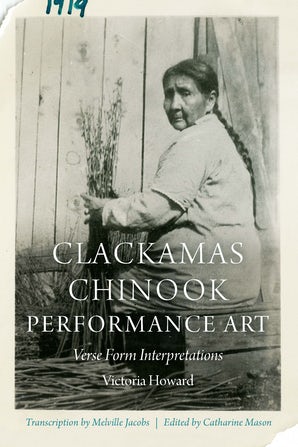
Clackamas Chinook Performance Art : Verse Form Interpretations by Victoria Howard ; (Series: Studies in the Anthropology of North American Indians)
Published through the Recovering Languages and Literacies of the Americas initiative, supported by the Andrew W. Mellon Foundation
Victoria Howard was born around 1865, a little more than ten years after the founding of the Confederated Tribes of Grand Ronde in western Oregon. Howardʼs maternal grandmother, Wagayuhlen Quiaquaty, was a successful and valued Clackamas shaman at Grand Ronde, and her maternal grandfather, Quiaquaty, was an elite Molalla chief. In the summer of 1929 the linguist Melville Jacobs, student of Franz Boas, requested to record Clackamas Chinook oral traditions with Howard, which she enthusiastically agreed to do. The result is an intricate and lively corpus of linguistic and ethnographic material, as well as rich performances of Clackamas literary heritage, as dictated by Howard and meticulously transcribed by Jacobs in his field notebooks. Ethnographical descriptions attest to the traditional lifestyle and environment in which Howard grew up, while fine details of cultural and historical events reveal the great consideration and devotion with which she recalled her past and that of her people.
Catharine Mason has edited twenty-five of Howard’s spoken-word performances into verse form entextualizations, along with the annotations provided by Jacobs in his publications of Howard’s corpus in the late 1950s. Mason pairs performances with biographical, family, and historical content that reflects Howardʼs ancestry, personal and social life, education, and worldview. Mason’s study reveals strong evidence of how the artist contemplated and internalized the complex meanings and everyday lessons of her literary heritage.
Empire and Catastrophe : Decolonization and Environmental Disaster in North Africa and Mediterranean France since 1954 by Spencer D. Segalla ; (Series: France Overseas: Studies in Empire and Decolonization)
Empire and Catastrophe examines natural and anthropogenic disasters during the years of decolonization in Algeria, Morocco, and France and explores how environmental catastrophes both shaped and were shaped by struggles over the dissolution of France’s empire in North Africa. Four disasters make up the core of the book: the 1954 earthquake in Algeria’s Chélif Valley, just weeks before the onset of the Algerian Revolution; a mass poisoning in Morocco in 1959 caused by toxic substances from an American military base; the 1959 Malpasset Dam collapse in Fréjus, France, which devastated the town’s Algerian immigrant community but which was blamed on Algerian sabotage; and the 1960 earthquake in Agadir, Morocco, which set off a public relations war between the United States, France, and the Soviet Union and which ignited a Moroccan national debate over modernity, identity, architecture, and urban planning.
Interrogating distinctions between agent and environment and between political and environmental violence through the lenses of state archives and through the remembered experiences and literary representations of disaster survivors, Spencer D. Segalla argues for the integration of environmental events into narratives of political and cultural decolonization.
A Grammar of Patwin by Lewis C. Lawyer ; (Series: Studies in the Native Languages of the Americas)
Published through the Recovering Languages and Literacies of the Americas initiative, supported by the Andrew W. Mellon Foundation.
A Native American language formerly spoken in hundreds of communities in the interior of California, Patwin (also known as Wintun Tʼewe) is now spoken by a small but growing number of language revitalizationists and their students. A Grammar of Patwin brings together two hundred years of word lists, notebooks, audio recordings, and manuscripts from archives across the United States and synthesizes this scattered collection into the first published description of the Patwin language. This book shines a light on the knowledge of past speakers and researchers with a clear and well-organized description supported by ample archival evidence.
Lewis C. Lawyer addresses the full range of grammatical structure with chapters on phonetics, phonology, nominals, nominal modifiers, spatial terms, verbs, and clauses. At every level of grammatical structure there is notable variation between dialects, and this variation is painstakingly described. An introductory chapter situates the language geographically and historically and also gives a detailed account of previous work on the language and of the archival materials on which the study is based. Throughout the process of writing this book, Lawyer remained in contact with Patwin communities and individuals, who helped to ensure that the content is appropriate from a cultural perspective.
The Leave-Takers : A Novel by Steven Wingate ; (Series: Flyover Fiction)
Four years ago Jacob Nassedrine from Boston and Laynie Jackman from Los Angeles came within an inch of getting married before things blew apart. They never expected that fate would hurl them back together in a windblown, isolated house on the plains of South Dakota, but that’s where they end up fighting for the future of their relationship—and for their own emotional survival—amid a minefield of ghosts.
After suffering the loss of both their families, they must unite to face the great crises of their lives: grief and guilt over their dead loved ones, low-level but persistent addictions to prescription drugs, the specter of familial violence, and recurrent miscarriages. Together they battle their way through the wilderness of their demons to forge sustainable identities that allow them to create a family.
The Leave-Takers is a journey through personal darkness to mutually shared light, set against a starkly beautiful backdrop that leaves nowhere to hide.
Letter from a Place I’ve Never Been : New and Collected Poems, 1986-2020 by Hilda Raz
Hilda Raz has an ability “to tell something every day and make it tough,” says John Kinsella in his introduction. Letter from a Place I’ve Never Been shows readers the evolution of a powerful poet who is also one of the foremost literary editors in the country. Bringing together all seven of her poetry collections, a long out-of-print early chapbook, and her newest work, this collection delights readers with its empathetic and incisive look at the inner and outer lives we lead and the complexities that come with being human.
Showcasing the work of a great American voice, Letter from a Place I’ve Never Been at last allows us to see the full scope and range of Raz’s work.
Manifest Destiny 2.0 : Genre Trouble in Game Worlds by Sara Humphreys ; (Series: Postwestern Horizons)
At a time when print and film have shown the classic Western and noir genres to be racist, heteronormative, and neocolonial, Sara Humphreys’s Manifest Destiny 2.0 asks why these genres endure so prolifically in the video game market. While video games provide a radically new and exciting medium for storytelling, most game narratives do not offer fresh ways of understanding the world.
Video games with complex storylines are based on enduring American literary genres that disseminate problematic ideologies, quelling cultural anxieties over economic, racial, and gender inequality through the institutional acceptance and performance of Anglo cultural, racial, and economic superiority. Although game critics and scholars recognize how genres structure games and gameplay, the concept of genre continues to be viewed as a largely invisible power, subordinate to the computational processes of programming, graphics, and the making of a multimillion-dollar best seller.
Investigating the social and cultural implications of the Western and noir genres in video games through two case studies—the best-selling games Red Dead Redemption (2010) and L.A. Noire (2011)—Humphreys demonstrates how the frontier myth continues to circulate exceptionalist versions of the United States. Video games spread the neoliberal and neocolonial ideologies of the genres even as they create a new form of performative literacy that intensifies the genres well beyond their originating historical contexts. Manifest Destiny 2.0 joins the growing body of scholarship dedicated to the historical, theoretical, critical, and cultural analysis of video games.
Optional-Narrator Theory : Principles, Perspectives, Proposals Edited by Sylvie Patron ; (Series: Frontiers of Narrative)
Twentieth-century narratology fostered the assumption, which distinguishes narratology from previous narrative theories, that all narratives have a narrator. Since the first formulations of this assumption, however, voices have come forward to denounce oversimplifications and dangerous confusions of issues. Optional-Narrator Theory is the first collection of essays to focus exclusively on the narrator from the perspective of optional-narrator theories.
Sylvie Patron is a prominent advocate of optional-narrator theories, and her collection boasts essays by many prominent scholars—including Jonathan Culler and John Brenkman—and covers a breadth of genres, from biblical narrative to poetry to comics. This volume bolsters the dialogue among optional-narrator and pan-narrator theorists across multiple fields of research. These essays make a strong intervention in narratology, pushing back against the widespread belief among narrative theorists in general and theorists of the novel in particular that the presence of a fictional narrator is a defining feature of fictional narratives. This topic is an important one for narrative theory and thus also for literary practice.
Optional-Narrator Theory advances a range of arguments for dispensing with the narrator, except when it can be said that the author actually “created” a fictional narrator.
A Place More Void Edited by Paul Kingsbury and Anna J. Secor ; (Series: Cultural Geographies + Rewriting the Earth)
A Place More Void takes its name from a scene in William Shakespeare’s The Tragedy of Julius Caesar, wherein an elderly soothsayer has a final chance to warn Caesar about the Ides of March. Worried that he won’t be able to deliver his message because of the crowded alleyways, the soothsayer devises a plan to find and intercept Caesar in “a place more void.” It is precisely such an elusive place that this volume makes space for by theorizing and empirically exploring the many yet widely neglected ways in which the void permeates geographical thinking.
This collection presents geography’s most in-depth and sustained engagements with the void to date, demonstrating the extent to which related themes such as gaps, cracks, lacks, and emptiness perforate geography’s fundamental concepts, practices, and passions. Arranged in four parts around the themes of Holes, Absences, Edges, and Voids, the contributions demonstrate the fecundity of the void for thinking across a wide range of phenomena: from archives to alien abductions, caves to cryptids, and vortexes to vanishing points.
A Place More Void gathers established and emerging scholars who engage a wide range of geographical issues and who express themselves not only through archival, literary, and socio-scientific investigations, but also through social and spatial theory, political manifesto, poetry, and performance art.
The Rinehart Frames by Cheswayo Mphanza ; (Series: African Poetry Book)
The poems in The Rinehart Frames seek to exhaust the labyrinths of ekphrasis. By juxtaposing the character of Rinehart from Ralph Ellison’s Invisible Man with the film 24 Frames by Abbas Kiarostami, the poems leap into secondary histories, spaces, and languages that encompass a collective yet varied consciousness of being.
Cheswayo Mphanza’s collection questions the boundaries of diaspora and narrative through a tethering of voices and forms that infringe on monolithic categorizations of Blackness and what can be intersected with it. The poems continue the conversations of the infinite possibilities of the imagination to dabble in, with, and out of history.
Your Crib, My Qibla by Saddiq Dzukogi ; (Series: African Poetry Book)
Your Crib, My Qibla interrogates loss, the death of a child, and a father’s pursuit of language able to articulate grief. In these poems, the language of memory functions as a space of mourning, connecting the dead with the world of the living. Culminating in an imagined dialogue between the father and his deceased daughter in the intricate space of the family, Your Crib, My Qibla explores grief, the fleeting nature of healing, and the constant obsession of memory as a language to reach the dead.
**All synopses courtesy of University of Nebraska Press (https://www.nebraskapress.unl.edu/)
COVID-19 Special Enrollment Period Extended to August 15
Extended Access Opportunity to Enroll in More Affordable Coverage Through HealthCare.gov
Mar 23, 2021
Under the American Rescue Plan, many people who buy their own health insurance directly through the Marketplace will become eligible to receive increased tax credits to reduce their premiums. Starting April 1, 2021, consumers enrolling in Marketplace coverage through HealthCare.gov will be able to take advantage of these increased savings and lower costs.
Building on the success of the current 2021 special enrollment period in response to the COVID-19 Public Health Emergency, and acknowledging that the COVID-19 public health emergency (PHE) continues to constitute exceptional circumstances that are sufficient to qualify individuals for an exceptional circumstances SEP, CMS will extend access to a 30-day SEP on HealthCare.gov until August 15, 2021. This action will allow individuals and families more time to access the SEP and enroll in Marketplace coverage with the increased tax credits to reduce their premiums, and for current enrollees to change plans in response to the availability of increased tax credits if they wish to do so.
Additionally, beginning in early July on HealthCare.gov, consumers who have received or have been determined eligible to receive unemployment compensation for any week during 2021 may be able to get another increase in savings when enrolling in new Marketplace coverage or updating their existing Marketplace application and enrollment. These savings to be made available starting in early July for eligible consumers are in addition to the increased savings available to consumers on HealthCare.gov starting April 1.
You can also find out additional information on the American Rescue Plan and special enrollment period by accessing our previously issued and updated resources. Consumers served by State-based Marketplaces that do not use the HealthCare.gov platform can check their state’s website to find out more information on the American Rescue Plan implementation and special enrollment periods in their state.
- American Rescue Plan — For more information and FAQs on the American Rescue Plan, please see the fact sheet and FAQs here: https://www.cms.gov/newsroom/fact-sheets/american-rescue-plan-and-marketplace
- Updated! 2021 Special Enrollment Period for COVID-19 Public Health Emergency Technical Stakeholder Guidance — The guidance document describes the SEP and provides answers to frequently asked questions. You can access the updated guidance at: https://www.cms.gov/CCIIO/Resources/Regulations-and-Guidance/2021-SEP-guidance.pdf
Special Enrollment Period and other Eligibility and Enrollment Questions
- Will CMS extend the time period during which consumers can access a 30-day special enrollment period (SEP) to allow more consumers to newly enroll in coverage to take advantage of the subsidy provisions in the American Rescue Plan, or change to a new plan based on their new subsidy amount?
- Yes, CMS will extend the time period during which consumers can access a 30 day SEP to newly enroll in Marketplace coverage or change to a new Marketplace plan through the 2021 special enrollment based on their eligibility for increased financial assistance to help pay for Marketplace coverage. CMS will extend the period of time during which consumers can access the 2021 special enrollment period until August 15, 2021 for consumers who apply through the HealthCare.gov platform.
- What exactly do current enrollees need to do to receive the increased tax credit amount?
- Current enrollees should submit an application update on or after April first to receive an updated eligibility determination. To do so, consumers should use the “report a life change” pathway to update their application, and then click the option for “change to my household’s income,” even if all the information on the application remains the same. After submitting the application update and receiving a new eligibility determination, consumers should enter the “plan compare” section of the site and confirm their current plan selection, so that their insurance company receives their new tax credit information.
- If desired, consumers may instead choose to make a new plan selection, but should consider how much they have already paid toward the deductible when deciding whether or not a change in plan makes sense. When a consumer changes plans, the amount they’ve already paid towards meeting their prior plan’s deductible and annual limit on cost sharing may be reset to zero, and they would need to start over paying out of pocket expenses to meet their new deductible and to reach the annual limit on cost sharing on their new plan. If they have made significant payments toward their current plan’s annual limit on cost sharing, consumers should check with their insurance company to see how it might impact them and what options are available to keep credit toward what they have already paid.
- How will consumers be notified of their updated eligibility for increased financial assistance?
- Once they update or submit a new application, consumers will receive an eligibility determination notice that they can download. Depending on their expressed preferences, they may also receive a hard copy mailed to their address. This notice will include consumers’ updated financial assistance amount and instructions for what they need to do next, such as select a plan and submit documentation to confirm their income or immigration status if necessary.
- For consumers who update their applications in April, when will the increased premium tax credits take effect?
- Updates to APTC generally take effect with the next month’s premium bill. As a result, updated plan selections made on or before April 30 will result in APTC increases effective May 1, updated plan selections made on or before May 31 will result in APTC increases effective June 1, and so on.
- How soon will consumers’ bills include a reduced premium that takes into account the increased premium tax credits?
- Updates to advance payments of the premium tax credit (APTC) generally take effect with the next month’s premium bill. As a result, updated plan selections made on or after April 1 and on or before April 30 will result in APTC increases effective May 1, and thus will be reflected on May bills.
- Will consumers be able to increase their APTC to make up for receiving too little for earlier months of the year (given that both increases are effective January 1, 2021 according to the American Rescue Plan Act), or will they need to wait and collect those additional amounts on their tax return?
- We do not anticipate applying PTC amounts for the months of January-April to future-month bills in the form of APTC, due to the significant complexity required for implementation of this retroactive application. Consumers will be able to claim this benefit in the form of PTC at the time of federal income tax filing when reconciling their premium tax credits for the entire year.
- Does the new law change anything about how the affordability of employer-based coverage is determined?
- No, employer-based coverage is still considered affordable for an employee and for any dependents to whom an offer extends if the amount the employee would pay for the lowest-cost plan that meets the minimum value standard and covers only the employee does not exceed a certain percentage of the employee’s household income. This is true even if the employee and other members of the household want to enroll in a plan that costs more and/or that covers dependents.
What’s Up Doc? New State Agency Publications at the Nebraska Library Commission

New state agency publications have been received at the Nebraska Library Commission for January and February 2021. Included are reports from the Nebraska Auditor of Public Accounts, the Nebraska Department of Economic Development, the Nebraska Legislature, the Nebraska Department of Transportation, and new books from the University of Nebraska Press, to name a few.
Most items, except the books from the University of Nebraska Press, are available for immediate viewing and printing by clicking on the highlighted link above, or directly in the .pdf below. You can read synopses of the books received from the University of Nebraska Press in the Book Briefs blogposts.
The Nebraska Legislature created the Nebraska Publications Clearinghouse in 1972, a service of the Nebraska Library Commission. Its purpose is to collect, preserve, and provide access to all public information published by Nebraska state agencies. By law (State Statutes 51-411 to 51-413) all Nebraska state agencies are required to submit their published documents to the Clearinghouse. For more information, visit the Nebraska Publications Clearinghouse page, contact Mary Sauers, Government Information Services Librarian; or contact Bonnie Henzel, State Documents Staff Assistant.
Big Talk From Small Libraries 2021 is tomorrow!
Small libraries! Awesome ideas! FREE!
Join us tomorrow for the 10th annual Big Talk From Small Libraries online conference. Registration is still open, so head over to the Registration page and sign up!
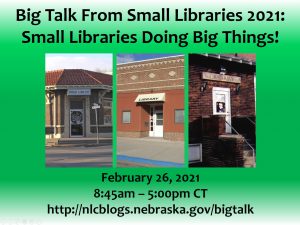 We have a great agenda for the day, with seven 50 minute sessions plus four 10 minute lightning round sessions.
We have a great agenda for the day, with seven 50 minute sessions plus four 10 minute lightning round sessions.
Topics range from technology to programming to new roles for libraries as they respond to the COVID-19 pandemic.
This event is a great opportunity to learn about the innovative things your colleagues are doing in their small libraries.
And, Nebraska library staff and board members can earn 1 hour of CE Credit for each hour of the conference you attend! A special Big Talk From Small Libraries CE Report form has been made available for you to submit your C.E. credits.
So, come join us for a day of big ideas from small libraries!
Book Briefs: New University of Nebraska Press Books at the Nebraska Publications Clearinghouse
The Nebraska Publications Clearinghouse receives documents every month from all Nebraska state agencies, including the University of Nebraska Press (UNP). Each month we will be showcasing the UNP books that the Clearinghouse receives. UNP books, as well as all Nebraska state documents, are available for checkout by libraries and librarians for their patrons.
Here are the UNP books the Clearinghouse received in January and February 2021:
Alliance Rises in the West : Labor, Race, and Solidarity in Industrial California by Charlotte K. Sunseri. (Series: Historical Archaeology of the American West)
Alliance Rises in the West documents the experiences of a company town at a critical moment in the rise of working-class consciousness in nineteenth-century California. Through archaeological research Charlotte K. Sunseri overcomes the silence of the documentary record to re-examine the mining frontier at Mono Mills, a community of multiple ethnic and racial groups, predominantly Chinese immigrants and Kudzadika Paiutes. The rise of political, economic, and social alliances among workers symbolized solidarity and provided opportunity to effect change in this setting of unequal power. Urban planning and neighborhood layout depict company structures of control and surveillance, while household archaeology from ethnically distinct neighborhoods speaks to lived experiences and how working-class identities emerged to crosscut ethnic and racial divides imposed in capitalism.
Mono Mills’s Paiute and Chinese communities experienced exclusionary legislation and brutal treatment on the basis of racial prejudice but lived alongside and built community with European American laborers, managers, and merchants who were also on an economic periphery. These experiences in Mono Mills and other nineteenth-century company towns did not occur in a vacuum; capitalists’ control and ideologies of race and class all doubled down as American workers used collective action to change the rules of the system. In this rare, in-depth perspective, close consideration of the ghost towns that dot the landscape of the West shows the haunting elements of capitalism and racial structures that characterized Gilded Age society and whose legacies endure to this day.
Hybrid Anxieties : Queering the French-Algerian War and Its Postcolonial Legacies by C. L. Quinan.(Series: Expanding Frontiers: Interdisciplinary Approaches to Studies of Women, Gender, and Sexuality)
Situated at the crossroads of queer theory and postcolonial studies, Hybrid Anxieties analyzes the intertwined and composite aspects of identities and textual forms in the wake of the French-Algerian War (1954–1962). C. L. Quinan argues that the war precipitated a dynamic in which a contestation of hegemonic masculinity occurred alongside a production of queer modes of subjectivity, embodiment, and memory that subvert norms. Innovations in literature and cinema were also directly impacted by the long and difficult process of decolonization, as the war provoked a rethinking of politics and aesthetics. The novels, films, and poetry analyzed in Hybrid Anxieties trace this imbrication of content and form, demonstrating how a postwar fracturing had both salutary and injurious effects, not only on bodies and psyches but also on artistic forms.
Adopting a queer postcolonial perspective, Hybrid Anxieties adds a new impulse to the question of how to rethink hegemonic notions of gender, sexuality, and nationality, thereby opening up new spaces for considering the redemptive and productive possibilities of negotiating life in a postcolonial context. Without losing sight of the trauma of this particularly violent chapter in history, Hybrid Anxieties proposes a new kind of hybridity that, however anxious and anticipatory, emphasizes the productive forces of a queer desire to deconstruct teleological relationships between past, present, and future.
Misanthropoetics : Social Flight and Literary Form in Early Modern England by Robert Darcy.
Misanthropoetics explores efforts by Renaissance writers to represent social flight and withdrawal as a fictional escape from the incongruous demands of culture. Through the invented term of its title, this book investigates the literary misanthrope in a number of key examples from Shakespeare, Jonson, Spenser, and the satirical milieu of Marston to exemplify the seemingly unresolvable paradoxes of social life.
In Shakespeare’s England a burgeoning urban population and the codification of social controls drove a new imaginary of revolt and flight in the figure of the literary misanthrope. This figure of disillusionment became an experiment in protesting absurd social demands, pitting friendship and family against prudent economies, testimonies of durable love against erosions of historical time, and stable categories of gender against the breakdown and promiscuity of language.
Misanthropoetics chronicles the period’s own excoriating critique of the illusion of resolution fostered within a social world beleaguered by myriad pressures and demands. This study interrogates form as a means not toward order but toward the impasse of irresolution, to detecting and declaring the social function of life as inherently incongruous. Robert Darcy applies questions of phenomenology and psychoanalysis, deconstruction and chaos theory to observe how the great deployers of literary form lost confidence that it could adhere to clear and stable rules of engagement, even as they tried desperately to shape and preserve it.
Telltale Women : Chronicling Gender in Early Modern Historiography by Allison Machlis Meyer. (Series: Women and Gender in the Early Modern World)
Telltale Women fundamentally reimagines the relationship between the history play and its source material as an intertextual one, presenting evidence for a new narrative about how—and why—these genres disparately chronicle the histories of royal women. Allison Machlis Meyer challenges established perceptions of source study, historiography, and the staging of gender politics in well-known drama by arguing that chronicles and political histories frequently value women’s political interventions and use narrative techniques to invest their voices with authority. Dramatists who used these sources for their history plays thus encountered a historical record that offered surprisingly ample precedents for depicting women’s perspectives and political influence as legitimate, and writers for the commercial theater grappled with such precedents by reshaping source material to create stage representations of royal women that condemned queenship and female power.
By tracing how the sanctioning of women’s political participation changes from the narrative page to the dramatic stage, Meyer demonstrates that gender politics in both canonical and noncanonical history plays emerge from playwrights’ intertextual engagements with a rich alternative view of women in the narrative historiography of the sixteenth and seventeenth centuries.
Book Briefs: New University of Nebraska Press Books at the Nebraska Publications Clearinghouse

The Nebraska Publications Clearinghouse receives documents every month from all Nebraska state agencies, including the University of Nebraska Press (UNP). Each month we will be showcasing the UNP books that the Clearinghouse receives. UNP books, as well as all Nebraska state documents, are available for checkout by libraries and librarians for their patrons.
Here are the UNP books the Clearinghouse received in November and December 2020:
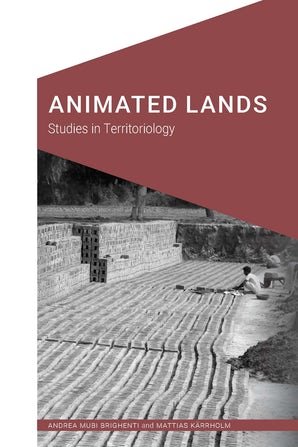
Animated Lands : Studies in Territoriology by Andrea Mubi Brighenti and Mattias Karrholm (Series: Cultural Geographies ; Rewriting the Earth)
In Animated Lands Andrea Mubi Brighenti and Mattias Kärrholm focus on territory as a living phenomenon—and territoriality as an active and constantly reshaping force. They explore the complexity of territorial production through a series of parallel investigations into fundamental territorial themes, such as rhythm, synchronization, melody, morphogenesis, and animism.
The notion of territory is excavated through case studies including the analysis of urban playgrounds, homemaking, the transformations of urban walls, and the stabilization of peculiar building types such as the house-museum. These empirical examples span such cities as Ahmedabad, Amsterdam, London, and Rome. Animated Lands provides a broad introduction to what a theory of territories could be and how it could help to advance sociospatial studies.

Beyond Blue Skies : The Rocket Plant Programs That Led to the Space Age by Chris Petty (Series: Outward Odyssey:A People’s History of Spaceflight)
In 1945 some experts still considered the so-called sound barrier an impenetrable wall, while winged rocket planes remained largely relegated to science fiction. But soon a series of unique rocket-powered research aircraft and the dedicated individuals who built, maintained, and flew them began to push the boundaries of flight in aviation’s quest to move ever higher, ever faster, toward the unknown. Beyond Blue Skies examines the thirty-year period after World War II during which aviation experienced an unprecedented era of progress that led the United States to the boundaries of outer space.
Between 1946 and 1975, an ancient dry lakebed in California’s High Desert played host to a series of rocket-powered research aircraft built to investigate the outer reaches of flight. The western Mojave’s Rogers Dry Lake became home to Edwards Air Force Base, NASA’s Flight Research Center, and an elite cadre of test pilots. Although one of them—Chuck Yeager—would rank among the most famous names in history, most who flew there during those years played their parts away from public view. The risks they routinely accepted were every bit as real as those facing NASA’s astronauts, but no magazine stories or free Corvettes awaited them—just long days in a close-knit community in the High Desert.
The role of not only the test pilots but the engineers, aerodynamicists, and support staff in making supersonic flight possible has been widely overlooked. Beyond Blue Skies charts the triumphs and tragedies of the rocket-plane era and the unsung efforts of the men and women who made amazing achievements possible.
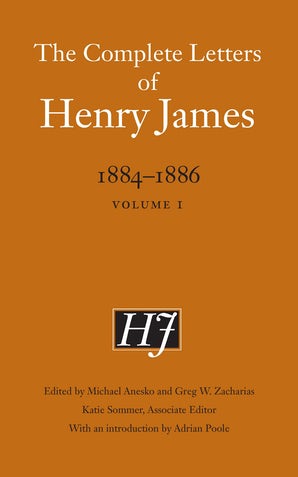
The Complete Letters of Henry James, 1884-1886, Volume I Edited by Michael Anesko and Greg W. Zacharias (Series: The Complete Letters of Henry James)Recipient of the Approved Edition seal from the Modern Language Association’s Committee on Scholarly Editions
This volume of The Complete Letters of Henry James, 1884–1886 includes 179 letters, 94 published for the first time, written between November 11, 1884, and December 21, 1885. The letters mark Henry James’s ongoing efforts to care for his sister, develop his work, strengthen his professional status, build friendships old and new, and maximize his income. James details work on midcareer novels The Bostonians and The Princess Casamassima as well as on tales that would help to define his career. He reveals his close acquaintance with British politics and politicians. This volume opens with Alice James’s arrival in England and concludes with Henry James’s plans to leave his flat in Piccadilly for his new address in De Vere Gardens, Kensington.
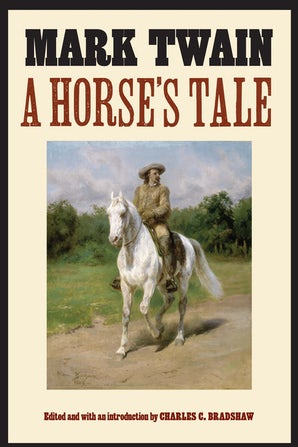
A Horse’s Tale by Mark Twain ; Edited and with an introduction by Charles C. Bradshaw. (Series: The Papers of William F. “Buffalo Bill” Cody)
At the turn of the twentieth century Minnie Maddern Fiske, a New York actress, socialite, and animal rights activist, wrote to Mark Twain with an unusual request: for Twain to write about the evils of bullfighting equal to that of his anti-vivisectionist story A Dog’s Tale. Twain responded with A Horse’s Tale, a comic animal tale that doubled as a frontier adventure and political diatribe.
A Horse’s Tale concerns Soldier Boy, Buffalo Bill Cody’s favorite horse, as the protagonist and sometime narrator at a fictional frontier outpost with the U.S. Seventh Cavalry. When the general’s orphaned niece arrives, Buffalo Bill takes her under his wing and ultimately lends her Soldier Boy so that they may seek adventure together. Twain uses the friendship between the girl and the horse as the basis for his eventual indictment of the barbarism of Spanish bullfighting. Twain’s novella is unusual for its complex tone—combining a comic children’s story and a dark portrait of animal cruelty. Including the themes of transatlantic relations and frontier culture, Twain offers a fresh look into the world of Buffalo Bill Cody from the perspective of one of America’s most beloved authors.
First published in 1906 in Harper’s Monthly and as a single volume the following year, A Horse’s Tale never again appeared in print except in anthologies of Twain’s work. This edition includes the full text of Twain’s original story, an introduction that situates the work in historical and biographical context, thorough annotations, and the addition of significant archival material related to Twain, Cody, and Fiske.
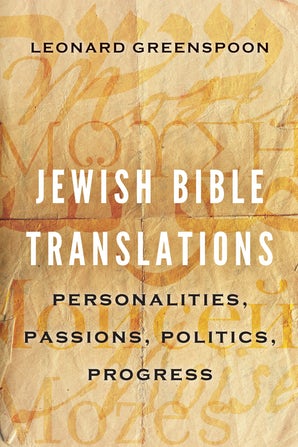
Jewish Bible Translations : Personalities, Passions, Politics, Progress by Leonard Greenspoon
Jewish Bible Translations is the first book to examine Jewish Bible translations from the third century BCE to our day. It is an overdue corrective of an important story that has been regularly omitted or downgraded in other histories of Bible translation.
Examining a wide range of translations over twenty-four centuries, Leonard Greenspoon delves into the historical, cultural, linguistic, and religious contexts of versions in eleven languages: Arabic, Aramaic, English, French, German, Greek, Hungarian, Italian, Russian, Spanish, and Yiddish. He profiles many Jewish translators, among them Buber, Hirsch, Kaplan, Leeser, Luzzatto, Mendelssohn, Orlinsky, and Saadiah Gaon, framing their aspirations within the Jewish and larger milieus in which they worked.
Greenspoon differentiates their principles, styles, and techniques—for example, their choice to emphasize either literal reflections of the Hebrew or distinctive elements of the vernacular language—and their underlying rationales. As he highlights distinctive features of Jewish Bible translations, he offers new insights regarding their shared characteristics and their limits. Additionally, Greenspoon shows how profoundly Jewish translators and interpreters influenced the style and diction of the King James Bible.
Accessible and authoritative for all from beginners to scholars, Jewish Bible Translations enables readers to make their own informed evaluations of individual translations and to holistically assess Bible translation within Judaism.
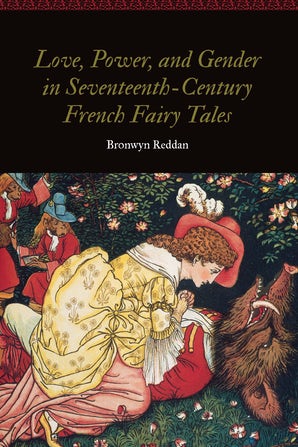
Love, Power, and Gender in Seventeenth-Century French Fairy Tales by Bronwyn Reddan (Series: Women and Gender in the Early Modern World)
Love is a key ingredient in the stereotypical fairy-tale ending in which everyone lives happily ever after. This romantic formula continues to influence contemporary ideas about love and marriage, but it ignores the history of love as an emotion that shapes and is shaped by hierarchies of power including gender, class, education, and social status. This interdisciplinary study questions the idealization of love as the ultimate happy ending by showing how the conteuses, the women writers who dominated the first French fairy-tale vogue in the 1690s, used the fairy-tale genre to critique the power dynamics of courtship and marriage. Their tales do not sit comfortably in the fairy-tale canon as they explore the good, the bad, and the ugly effects of love and marriage on the lives of their heroines.
Bronwyn Reddan argues that the conteuses’ scripts for love emphasize the importance of gender in determining the “right” way to love in seventeenth-century France. Their version of fairy-tale love is historical and contingent rather than universal and timeless. This conversation about love compels revision of the happily-ever-after narrative and offers incisive commentary on the gendered scripts for the performance of love in courtship and marriage in seventeenth-century France.
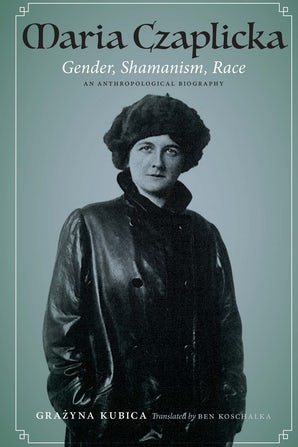
Maria Czaplicka : Gender, Shamanism, Race by Grazyna Kubica ; Translated by Ben Koschalka (Series: Critical Studies in the History of Anthropology)
This biography of the Polish British anthropologist Maria Czaplicka (1884–1921) is also a cultural study of the dynamics of the anthropological collective presented from a researcher-centric perspective. Czaplicka, together with Bronisław Malinowski, studied anthropology in London and later at Oxford, then she headed the Yenisei Expedition to Siberia (1914–15) and was the first female lecturer of anthropology at Oxford. She was an engaged feminist and an expert on political issues in Northern Asia and Eastern Europe. But this remarkable woman’s career was cut short by suicide. Like many women anthropologists of the time, Czaplicka journeyed through various academic institutions, and her legacy has been dispersed and her field materials lost.
Grażyna Kubica covers the major events in Czaplicka’s life and provides contextual knowledge about the intellectual formation in which Czaplicka grew up, including the Warsaw radical intelligentsia and the contemporary anthropology of which she became a part. Kubica also presents a critical analysis of Czaplicka’s scientific and literary works, related to the issues of gender, shamanism, and race. Kubica shows how Czaplicka’s sense of agency and subjectivity enriched and shaped the practice of anthropology and sheds light on how scientific knowledge arises and is produced.
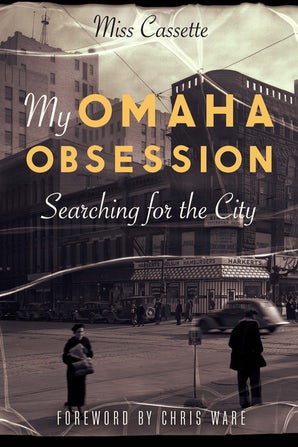
My Omaha Obsession : Searching for the City by Miss Cassette
My Omaha Obsession takes the reader on an idiosyncratic tour through some of Omaha’s neighborhoods, buildings, architecture, and people, celebrating the city’s unusual history. Rather than covering the city’s best-known sites, Miss Cassette is irresistibly drawn to strange little buildings and glorious large homes that don’t exist anymore as well as to stories of Harkert’s Holsum Hamburgers and the Twenties Club.
Piecing together the records of buildings and homes and everything interesting that came after, Miss Cassette shares her observations of the property and its significance to Omaha. She scrutinizes land deeds, insurance maps, tax records, and old newspaper articles to uncover a property’s singular story. Through conversations with fellow detectives and history enthusiasts, she guides readers along her path of hunches, personal interests, mishaps, and more.
As a longtime resident of Omaha, Miss Cassette is informed by memories of her youth combined with an enduring curiosity about the city’s offbeat relics and remains. Part memoir and part research guide with a healthy dose of colorful wandering, My Omaha Obsession celebrates the historic built environment and searches for the people who shaped early Omaha.

Never Caught Twice : Horse Stealing in Western Nebraska, 1850-1890 by Matthew S. Luckett
Never Caught Twice presents the untold history of horse raiding and stealing on the Great Plains of western Nebraska. By investigating horse stealing by and from four Plains groups—American Indians, the U.S. Army, ranchers and cowboys, and farmers—Matthew S. Luckett clarifies a widely misunderstood crime in Western mythology and shows that horse stealing transformed plains culture and settlement in fundamental and surprising ways.
From Lakota and Cheyenne horse raids to rustling gangs in the Sandhills, horse theft was widespread and devastating across the region. The horse’s critical importance in both Native and white societies meant that horse stealing destabilized communities and jeopardized the peace throughout the plains, instigating massacres and murders and causing people to act furiously in defense of their most expensive, most important, and most beloved property. But as it became increasingly clear that no one legal or military institution could fully control it, would-be victims desperately sought a solution that would spare their farms and families from the calamitous loss of a horse. For some, that solution was violence. Never Caught Twice shows how the story of horse stealing across western Nebraska and the Great Plains was in many ways the story of the old West itself.
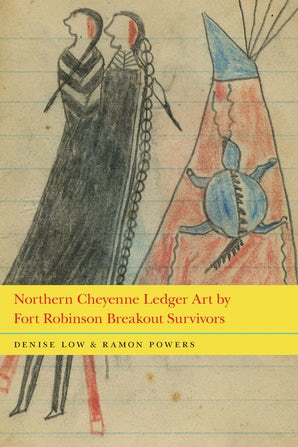
Northern Cheyenne Ledger Art by Fort Robinson Breakout Survivors by Denise Low and Ramon Powers
Northern Cheyenne Ledger Art by Fort Robinson Breakout Survivors presents the images of Native warriors—Wild Hog, Porcupine, and Left Hand, as well as possibly Noisy Walker (or Old Man), Old Crow, Blacksmith, and Tangled Hair—as they awaited probable execution in the Dodge City jail in 1879. When Sheriff Bat Masterson provided drawing materials, the men created war books that were coded to avoid confrontation with white authorities and to narrate survival from a Northern Cheyenne point of view. The prisoners used the ledger-art notebooks to maintain their cultural practices during incarceration and as gifts and for barter with whites in the prison where they struggled to survive.
The ledger-art notebooks present evidence of spiritual practice and include images of contemporaneous animals of the region, hunting, courtship, dance, social groupings, and a few war-related scenes. Denise Low and Ramon Powers include biographical materials from the imprisonment and subsequent release, which extend the historical arc of Northern Cheyenne heroes of the Plains Indian Wars into reservation times. Sources include selected ledger drawings, army reports, letters, newspapers, and interviews with some of the Northern Cheyenne men and their descendants. Accounts from a firsthand witness of the drawings and composition of the ledgers themselves give further information about Native perspectives on the conflicted history of the North American West in the nineteenth century and beyond.
This group of artists jailed after the tragedy of the Fort Robinson Breakout have left a legacy of courage and powerful art.
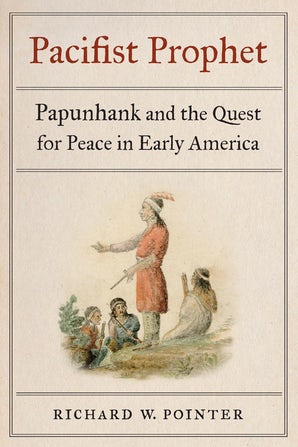
Pacifist Prophet : Paunhank and the Quest for Peace in Early America by Richard W. Pointer
Pacifist Prophet recounts the untold history of peaceable Native Americans in the eighteenth century, as explored through the world of Papunhank (ca. 1705–75), a Munsee and Moravian prophet, preacher, reformer, and diplomat. Papunhank’s life was dominated by a search for a peaceful homeland in Pennsylvania and the Ohio country amid the upheavals of the era between the Seven Years’ War and the American Revolution.
His efforts paralleled other Indian quests for autonomy but with a crucial twist: he was a pacifist committed to using only nonviolent means. Such an approach countered the messages of other Native prophets and ran against the tide in an early American world increasingly wrecked with violence, racial hatred, and political turmoil. Nevertheless, Papunhank was not alone. He followed and contributed to a longer and wider indigenous peace tradition.
Richard W. Pointer shows how Papunhank pushed beyond the pragmatic pacifism of other Indians and developed from indigenous and Christian influences a principled pacifism that became the driving force of his life and leadership. Hundreds of Native people embraced his call to be “a great Lover of Peace” in their quests for home. Against formidable odds, Papunhank’s prophetic message spoke boldly to Euro-American and Native centers of power and kept many Indians alive during a time when their very survival was constantly threatened. Papunhank’s story sheds critical new light on the responses of some Munsees, Delawares, Mahicans, Nanticokes, and Conoys for whom the “way of war” was no way at all.
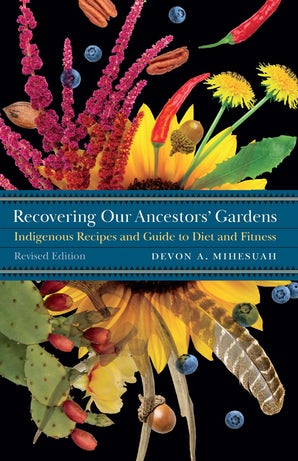
Recovering Our Ancestors’ Gardens : Indigenous Recipes and Guide to Diet and Fitness by Devon A. Mihesuah
2020 Gourmand World Cookbook Award
Winner of the Gourmand International World Cookbook Award,Recovering Our Ancestors’ Gardens is back! Featuring an expanded array of tempting recipes of indigenous ingredients and practical advice about health, fitness, and becoming involved in the burgeoning indigenous food sovereignty movement, the acclaimed Choctaw author and scholar Devon A. Mihesuah draws on the rich indigenous heritages of this continent to offer a helpful guide to a healthier life.
Recovering Our Ancestors’ Gardens features pointed discussions about the causes of the generally poor state of indigenous health today. Diminished health, Mihesuah contends, is a pervasive consequence of colonialism, but by advocating for political, social, economic, and environmental changes, traditional food systems and activities can be reclaimed and made relevant for a healthier lifestyle today.
New recipes feature pawpaw sorbet, dandelion salad, lima bean hummus, cranberry pie with cornmeal crust, grape dumplings, green chile and turkey posole, and blue corn pancakes, among other dishes. Savory, natural, and steeped in the Native traditions of this land, these recipes are sure to delight and satisfy.
This new edition is revised, updated, and contains new information, new chapters, and an extensive curriculum guide that includes objectives, resources, study questions, assignments, and activities for teachers, librarians, food sovereignty activists, and anyone wanting to know more about indigenous foodways.
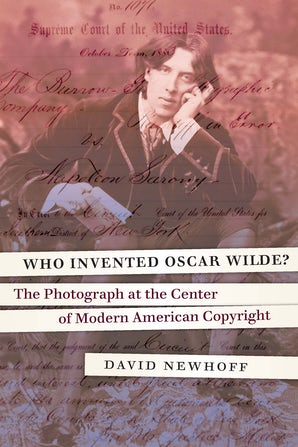
Who Invented Oscar Wilde? : The Photograph at the Center of Modern American Copyright by David Newhoff
In early 1882, before young Oscar Wilde embarked on his lecture tour across America, he posed for publicity photos taken by a famously eccentric New York photographer named Napoleon Sarony. Few would guess that one of those photographs would become the subject of the Supreme Court case that challenged copyright protection for all photography—a constitutional question that asked how a machine-made image could possibly be a work of human creativity.
Who Invented Oscar Wilde? is a story about the nature of authorship and the “convenient fiction” we call copyright. While a seemingly obscure topic, copyright has been a hotly contested issue almost since the day the internet became publicly accessible. The presumed obsolescence of authorial rights in this age of abundant access has fueled a debate that reaches far beyond the question of compensation for authors of works. Much of the literature on the subject is either highly academic, highly critical of copyright, or both.
With a light and balanced touch, David Newhoff makes a case for intellectual property law, tracing the concept of authorship from copyright’s ancient beginnings to its adoption in American culture to its eventual confrontation with photography and its relevance in the digital age. Newhoff tells a little-known story that will appeal to a broad spectrum of interests while making an argument that copyright is an essential ingredient to upholding the principles on which liberal democracy is founded.
**All book covers and synopses courtesy of University of Nebraska Press (https://www.nebraskapress.unl.edu/)
What’s Up Doc? New State Agency Publications at the Nebraska Library Commission

New state agency publications have been received at the Nebraska Library Commission for September through December 2020. Included are reports from the Nebraska Auditor of Public Accounts, the Nebraska Department of Economic Development, the Nebraska Legislature, the Nebraska Department of Transportation, and new books from the University of Nebraska Press, to name a few.
Most items, except the books from the University of Nebraska Press, are available for immediate viewing and printing by clicking on the highlighted link above, or directly in the .pdf below. You can read synopses of the books received from the University of Nebraska Press in the Book Briefs blogposts.
The Nebraska Legislature created the Nebraska Publications Clearinghouse in 1972, a service of the Nebraska Library Commission. Its purpose is to collect, preserve, and provide access to all public information published by Nebraska state agencies. By law (State Statutes 51-411 to 51-413) all Nebraska state agencies are required to submit their published documents to the Clearinghouse. For more information, visit the Nebraska Publications Clearinghouse page, contact Mary Sauers, Government Information Services Librarian; or contact Bonnie Henzel, State Documents Staff Assistant.
Book Briefs: New University of Nebraska Press Books at the Nebraska Publications Clearinghouse

The Nebraska Publications Clearinghouse receives documents every month from all Nebraska state agencies, including the University of Nebraska Press (UNP). Each month we will be showcasing the UNP books that the Clearinghouse receives. UNP books, as well as all Nebraska state documents, are available for checkout by libraries and librarians for their patrons.
Here are the UNP books the Clearinghouse received in September and October 2020:
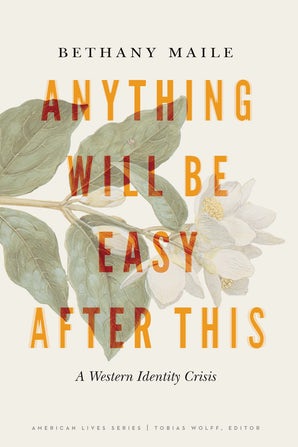
Anything Will Be Easy After This : A Western Identity Crisis Bethany Maile (Series: American Lives)
Bethany Maile had a mythological American West in mind when she returned to Idaho after dropping out of college in Boston, only to find a farm-town-turned-suburb instead of the Wild West wonderland she remembered. Haunted by what she had so completely misremembered, Maile resolved to investigate her attachment to the western myth, however flawed.
Deciding to engage in a variety of “western” events, Maile trailed rodeo queens, bid on cattle, fired .22s at the gun range, and searched out wild horses. With lively reportage and a sharp wit, she recounts her efforts to understand how the western myth is outdated yet persistent while ultimately exploring the need for story and the risks inherent to that need. Anything Will Be Easy after This traces Maile’s evolution from a girl suckered by a busted-down story to a more knowing woman who discovers a new narrative that enchants without deluding.
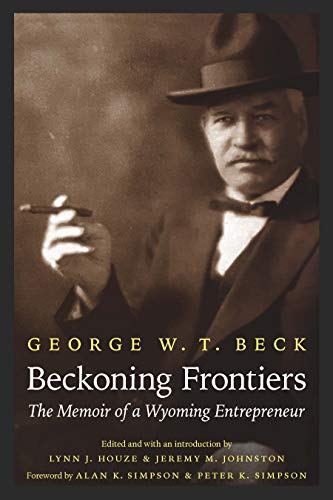
Beckoning Frontiers : The Memoir of a Wyoming Entrepreneur George W. T. Beck, Edited and with an introduction by Lynn J. Houze and Jeremy M. Johnston (Series: The Papers of William F. “Buffalo Bill” Cody)
George W. T. Beck, an influential rancher and entrepreneur in the American West, collaborated with William F. “Buffalo Bill” Cody to establish the town of Cody, Wyoming, in the 1890s. He advanced his financial investments in Wyoming through his numerous personal and professional contacts with various eastern investors and politicians in Washington DC. Beck’s family—his father a Kentucky senator and his mother a grandniece of George Washington—and his adventures in the American West resulted in personal associates who ranged from western legends Buffalo Bill, Jesse James, and Calamity Jane to wealthy American elites such as George and Phoebe Hearst and Theodore Roosevelt.
This definitive edition of Beck’s memoir provides a glimpse of early life in Wyoming, offering readers a rare perspective on how community boosters cooperated with political leaders and wealthy financiers. Beck’s memoir, introduced and annotated by Lynn J. Houze and Jeremy M. Johnston, offers a unique and sometimes amusing view of financial dealings in eastern boardrooms, as well as stories of Beck’s adventures with Buffalo Bill in Wyoming. Beck’s memoir demonstrates not only his interest in developing the West but also his humor and his willingness to collaborate with a variety of people.
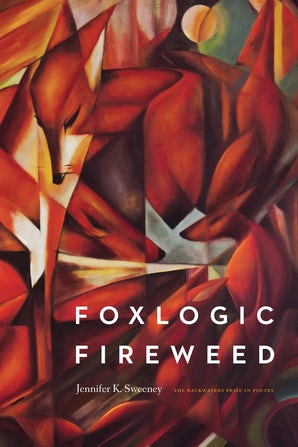
Foxlogic, Fireweed Jennifer K. Sweeney (Series: The Backwaters Prize in Poetry)
Winner of the Backwaters Prize in Poetry, Jennifer K. Sweeney’s Foxlogic, Fireweed follows a lyrical sequence of five physical and emotional terrains—floodplain, coast, desert, suburbia, and mesa—braiding themes of nature, domesticity, isolation, and human relationships. These are poems of the earth’s wild heart, its searing mysteries, its hollows, and its species, poems of the complex domestic space, of before and after motherhood, gun terror, the election, of dislocation and home, and of how we circle toward and away from our centers. Sweeney is not afraid to take up the domestic and inner lives of women, a nuanced relationship with the natural world that feels female or even maternal, or a duty to keeping alive poetry’s big questions of transcendence, revelation, awe, and deep presence in the ordinary.

If the Body Allows It Megan Cummins (Series: Prairie Schooner Book Prize in Fiction
Winner of the Prairie Schooner Book Prize in Fiction, If the Body Allows It is divided into six parts and framed by the story of Marie, a woman in her thirties living in Newark, New Jersey. Suffering from a chronic autoimmune illness, she also struggles with guilt over the overdose and death of her father, whom she feels she betrayed at the end of his life. The stories within the frame—about failed marriages, places of isolation and protection, teenage mistakes, and forging a life in the aftermath—are the stories the narrator writes after she meets and falls in love with a man whose grief mirrors her own. If the Body Allows It explores illness and its aftermath, guilt and addiction, and the relationships the characters form after they’ve lost everyone else, including themselves.
Introspective, devastating, and funny, If the Body Allows It grapples with the idea that life is always on the brink of never being the same again.
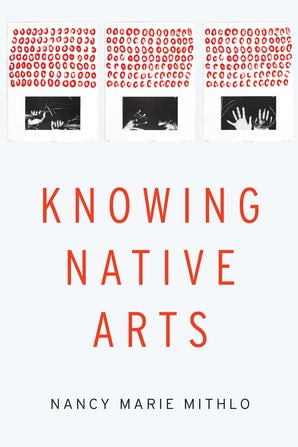
Knowing Native Arts Nancy Marie Mithlo
Knowing Native Arts brings Nancy Marie Mithlo’s Native insider perspective to understanding the significance of Indigenous arts in national and global milieus. These musings, written from the perspective of a senior academic and curator traversing a dynamic and at turns fraught era of Native self-determination, are a critical appraisal of a system that is often broken for Native peoples seeking equity in the arts.
Mithlo addresses crucial issues, such as the professionalization of Native arts scholarship, disparities in philanthropy and training, ethnic fraud, and the receptive scope of Native arts in new global and digital realms. This contribution to the field of fine arts broadens the scope of discussions and offers insights that are often excluded from contemporary appraisals.
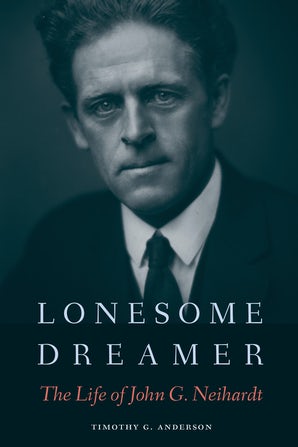
Lonesome Dreamer : the Life of John G. Neihardt Timothy G. Anderson
American poet and writer John G. Neihardt (1881–1973) possessed an inquiring and spiritual mind. Those qualities came to the fore in Black Elk Speaks, the story of the Lakota holy man Black Elk, for which he is best remembered. Over the course of thirty years he also wrote a five-volume epic poem, A Cycle of the West, which told the story of the settling of the American West.
Despite Neihardt’s widespread name recognition, the success of Black Elk Speaks, and a list of critically acclaimed books and poems, Lonesome Dreamer is the first biography of Neihardt in nearly forty years. Timothy G. Anderson describes Neihardt’s life from his humble beginnings in Illinois, to being named poet laureate of Nebraska in 1921, to his appearance on the Dick Cavett Show at the age of ninety. Anderson also delves into Neihardt’s success as a poet far from the East Coast literary establishment, his resistance to modernist movements in poetry, and his wish to understand and describe the experience of the Plains Indians. Offering insight into both his personal and his literary life, this biography reaffirms Neihardt’s place in American literary history, his successes and failures, and his unbreakable spirit.
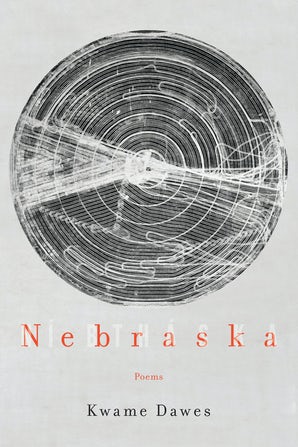
Nebraska : Poems Kwame Dawes
Kwame Dawes is not a native Nebraskan. Born in Ghana, he later moved to Jamaica, where he spent most of his childhood and early adulthood. In 1992 he relocated to the United States and eventually found himself an American living in Lincoln, Nebraska.
In Nebraska, this beautiful and evocative collection of poems, Dawes explores a theme constant in his work—the intersection of memory, home, and artistic invention. The poems, set against the backdrop of Nebraska’s discrete cycle of seasons, are meditative even as they search for a sense of place in a new landscape. While he shovels snow or walks in the bitter cold to his car, he is engulfed with memories of Kingston, yet when he travels, he finds himself longing for the open space of the plains and the first snowfall. With a strong sense of place and haunting memories, Dawes grapples with life in Nebraska as a transplant.
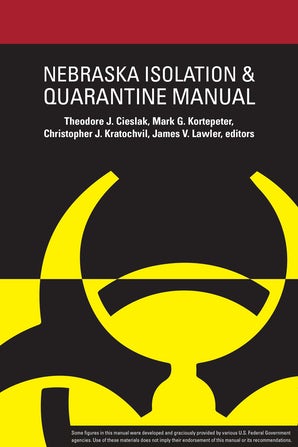
Nebraska Isolation & Quarantine Manual Edited by Theodore J. Cieslak, Mark G. Kortepeter, Christopher J. Kratochvil, and James V. Lawler
The University of Nebraska Medical Center has gained international recognition for its expertise in the control and management of highly infectious diseases, with a good deal of public attention given to its work during the 2014 Ebola outbreak in west Africa and now in 2020 with its biocontainment and treatment of more than a dozen cruise ship evacuees who were exposed to the coronavirus. The Nebraska Isolation and Quarantine Manual is a practical guide for local public health officials, emergency management personnel, and health care providers looking to implement evidence-based best practices in the event of an infectious disease outbreak.
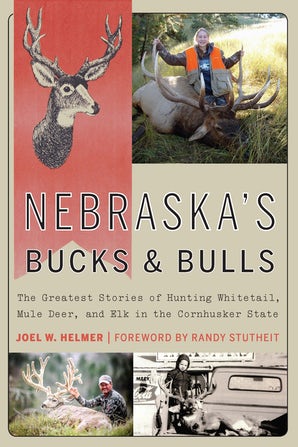
Nebraska’s Bucks & Bulls : the Greatest Stories of Hunting Whitetail, Mule Deer, and Elk in the Cornhusker State Joel W. Helmer
Eclipsing Memorial Stadium on a Husker football game day, deer season is arguably the largest single sporting event of the year in Nebraska, with more than one hundred thousand hunters going afield with the hopes of tagging a trophy buck or bull.
Nebraska’s Bucks and Bulls tells the stories and shares the photographs of the greatest whitetail, mule deer, and elk shot in Nebraska. Collected through firsthand interviews with the hunters, these personal hunting stories span the decades from the mid-1940s through the 2010s. Each story shares the excitement and adventure of the hunt while weaving in Nebraska history, ecology, and geography. Photographs of the trophy animals showcase not only the quality and variety of big-game hunting in Nebraska but also the changes in hunting clothes, gear, guns, and vehicles through the state’s history.
Recounted by Joel W. Helmer, an avid hunter and official measurer for the Boone and Crockett Club, which created the scoring system for measuring North American big-game animals, each chapter tells the story of a buck or bull certified through official state or national records books. Nebraska’s Bucks and Bulls has finally gathered the state’s greatest hunting tales in one place.
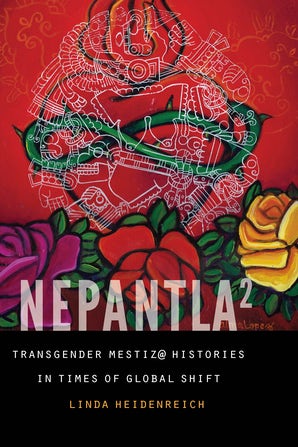
Nepantla Squared : Transgender Mestiz@ Histories in Times of Global Shift Linda Heidenreich (Series: Expanding Frontiers: Interdisciplinary Approaches to Studies of Women, Gender, and Sexuality)
Nepantla Squared maps the lives of two transgender mestiz@s, one during the turn of the twentieth century and one during the turn of the twenty-first century, to chart the ways race, gender, sex, ethnicity, and capital function differently in different times. To address the erasure of transgender mestiz@ realities from history, Linda Heidenreich employs an intersectional analysis that critiques monopoly and global capitalism. Heidenreich builds on the work of Gloria Anzaldúa’s concept of nepantleras, those who could live between and embody more than one culture, to coin the term nepantla², marking times of capitalist transition where gender was also in motion. Transgender mestiz@s, too, embodied that movement.
Heidenreich insists on a careful examination of the multiple in-between spaces that construct lives between cultures and genders during in-between times of shifting empire and capital. In so doing, they offer an important discussion of race, class, nation, and citizenship centered on transgender bodies of color that challenges readers to rethink the way they understand the gendered social and economic challenges of today.
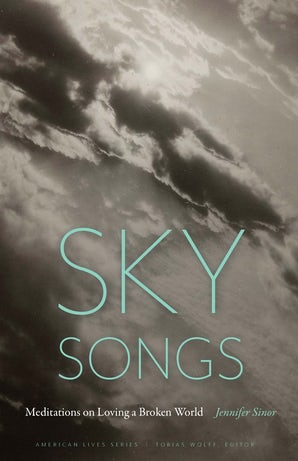
Sky Songs : Meditations on Loving a Broken World Jennifer Sinor (Series: American Lives)
Sky Songs is a collection of essays that takes inspiration from the ancient seabed in which Jennifer Sinor lives, an elemental landscape that reminds her that our lives are shaped by all that has passed through. Beginning with the conception of her first son, which coincided with the tragic death of her uncle on an Alaskan river, and ending a decade later in the Himalayan home of the Dalai Lama, Sinor offers a lyric exploration of language, love, and the promise inherent in the stories we tell: to remember.
In these essays, Sinor takes us through the mountains, deserts, and rivers of the West and along with her on her travels to India. Whether rooted in the dailiness of raising children or practicing yoga, Sinor searches for the places where grace resides. The essays often weave several narrative threads together in the search for relationship and connection. A mother, writer, teacher, and yoga instructor, Sinor ultimately tackles the most difficult question: how to live in a broken world filled with both suffering and grace.
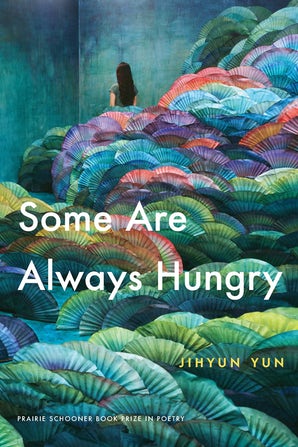
Some Are Always Hungry Jihyun Yun (Series: Prairie Schooner Book Prize in Poetry)
Winner of the Prairie Schooner Book Prize in Poetry, Some Are Always Hungry chronicles a family’s wartime survival, immigration, and heirloom trauma through the lens of food, or the lack thereof. Through the vehicle of recipe, butchery, and dinner table poems, the collection negotiates the myriad ways diasporic communities comfort and name themselves in other nations, as well as the ways cuisine is inextricably linked to occupation, transmission, and survival. Dwelling on the personal as much as the historical, Some Are Always Hungry traces the lineage of the speaker’s place in history and diaspora through mythmaking and cooking, which is to say, conjuring.

Sporting Realitites : Critical Readings of the Sports Documentary Edited by Samantha N. Sheppard and Travis Vogan (Series: Sports, Media, and Society)
Despite the increasing number of popular and celebrated sports documentaries in contemporary culture, such as ESPN’s 30 for 30 series, there has been little scholarly engagement with this genre. Sports documentaries, like all films, do not merely showcase objective reality but rather construct specific versions of sporting culture that serve distinct economic, industrial, institutional, historical, and sociopolitical ends ripe for criticism, contextualization, and exploration.
Sporting Realities brings together a diverse group of scholars to probe the sports documentary’s cultural meanings, aesthetic practices, industrial and commercial dimensions, and political contours across historical, social, medium-specific, and geographic contexts. It considers and critiques the sports documentary’s visible and powerful position in contemporary culture and forges novel connections between the study of nonfiction media and sport.
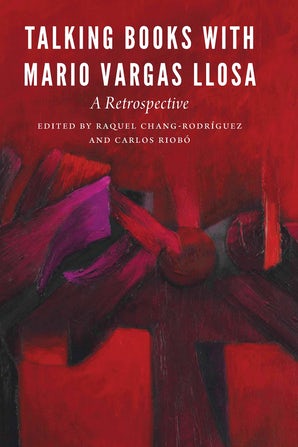
Talking Books with Mario Vargas Llosa : A Retrospective Edited by Raquel Chang-Rodríguez and Carlos Riobó (Series: New Hispanisms)
The essays included in Talking Books with Mario Vargas Llosa celebrate Mario Vargas Llosa’s visits to the City College of New York, the creation of the Cátedra Vargas Llosa in his honor, and the interests of the Peruvian author in reading and books. This volume contains previously unpublished material by Vargas Llosa himself, as well as by novelists and literary critics associated with the Cátedra.
This collection offers readers an opportunity to learn about Vargas Llosa’s body of work through multiple perspectives: his own and those of eminent fiction writers and important literary critics. The book offers significant analysis and rich conversation that bring to life many of the Nobel Laureate’s characters and provide insights into his writing process and imagination. As the last surviving member of the original group of writers of the Latin American Boom—which included Gabriel García Márquez, Carlos Fuentes, and Julio Cortázar—Vargas Llosa endures as a literary icon because his fiction has remained fresh and innovative. His prolific works span many different themes and subgenres.
A combination of literary analyses and anecdotal contributions in this volume reveal the little-known human and intellectual dimensions of Vargas Llosa the writer and Vargas Llosa the man.
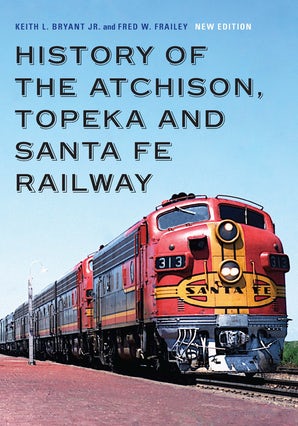
History of the Atchison, Topeka and Santa Fe Railway Keith L. Bryant Jr. and Fred W. Frailey
Cyrus K. Holliday envisioned a railroad that would run from Kansas to the Pacific, increasing the commerce and prosperity of the nation. With farsighted investors and shrewd management, the Atchison, Topeka and Santa Fe Railway grew from Holliday’s idea into a model of the modern, rapid, and efficient railroad. There were many growing pains early on, including rustlers, thieves, and desperadoes as well as the nineteenth century’s economic and climatic hardships. The railroad eventually extended from Chicago to San Francisco, with substantial holdings in oil fields, timber land, uranium mines, pipelines, and real estate.
This is the first comprehensive history of the iconic Atchison, Topeka and Santa Fe Railway, from its birth in 1859 to its termination in 1996. This volume discusses the construction and operation of the railway, the strategies of its leaders, the evolution of its locomotive fleet, and its famed passenger service with partner Fred Harvey. The vast changes within the nation’s railway system led to a merger with the Burlington Northern and the creation of the BNSF Railway.
An iconic railroad, the Santa Fe at its peak operated thirteen thousand miles of routes and served the southwestern region of the nation with the corporate slogan “Santa Fe All the Way.” This new edition covers almost twenty-five more years of history, including the merger of the Santa Fe and Burlington Northern railroads and new material on labor, minorities, and women on the carrier along with new and updated maps and photographs.
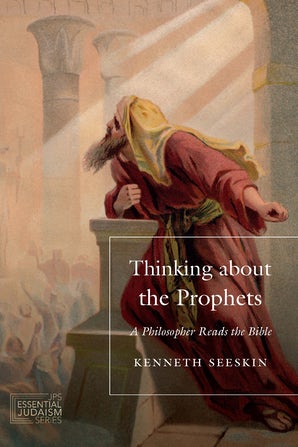
Thinking About the Prophets : A Philosopher Reads the Bible Kenneth Seeskin (Series: JPS Essential Judaism)
Rethinking the great literary prophets whose ministry ran from the eighth to the sixth centuries BCE—Amos, Hosea, First Isaiah, Jeremiah, Ezekiel, Second Isaiah, and Job—Thinking about the Prophets examines their often-shocking teachings in light of their times, their influence on later Western and Jewish thinkers, and their enduring lessons for all of us. As a noted scholar of Jewish philosophy, Kenneth Seeskin teases out philosophical, ethical, and theological questions in the writings, such as the nature of moral reasoning, the divine persona, divine providence, the suffering of the innocent, the power of repentance, and what it means to believe in a monotheistic conception of God.
Seeskin demonstrates that great ideas are not limited by time or place, but rather once put forth, take on a life of their own. Thus he interweaves the medieval and modern philosophers Maimonides, Kant, Cohen, Buber, Levinas, Heschel, and Soloveitchik, all of whom read the prophets and had important things to say as a result. We come to see the prophets perhaps in equal measure as divinely authorized whistle-blowers and profound thinkers of the human condition.
Readers of all levels will find this volume an accessible and provoking introduction to the enduring significance of biblical prophecy.

Too Strong To Be Broken : The Life of Edward J. Driving Hawk Edward J. Driving Hawk and Virginia Driving Hawk Sneve (Series: American Indian Lives)
Too Strong to Be Broken explores the dynamic life of Edward J. Driving Hawk, a Vietnam and Korean War veteran, chairman of the Rosebud Sioux Tribe, former president of the National Congress of American Indians, husband, father, recovered alcoholic, and convicted felon.
Driving Hawk’s story begins with his childhood on the rural plains of South Dakota, then follows him as he travels back and forth to Asia for two wars and journeys across the Midwest and Southwest. In his positions of leadership back in the United States, Driving Hawk acted in the best interest of his community, even when sparring with South Dakota governor Bill Janklow and the FBI.
After retiring from public service, he started a construction business and helped create the United States Reservation Bank and Trust. Unfortunately, a key participant in the bank embezzled millions and fled, leaving Driving Hawk to take the blame. Rather than plead guilty to a crime he did not commit, the seventy-four-year-old grandfather went to prison for a year and a day, even as he suffered the debilitating effects of Agent Orange.
Driving Hawk fully believes that the spirits of his departed ancestors watched out for him during his twenty-year career in the U.S. Air Force, including his exposure to Agent Orange, and throughout his life as he survived surgeries, strokes, a tornado, a plane crash, and alcoholism. With the help of his sister, Virginia Driving Hawk Sneve, Driving Hawk recounts his life’s story alongside his wife, Carmen, and their five children.
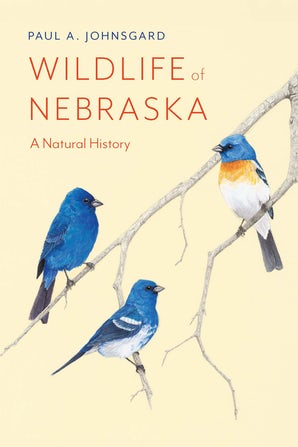
Wildlife of Nebraska : A Natural History Paul A. Johnsgard
In Wildlife of Nebraska: A Natural History, Paul A. Johnsgard surveys the variety and biology of more than six hundred Nebraska species. Narrative accounts describe the ecology and biology of the state’s birds, its mammals, and its reptiles and amphibians, summarizing the abundance, distributions, and habitats of this wildlife. To provide an introduction to the state’s major ecosystems, climate, and topography, Johnsgard examines major public-access natural areas, including national monuments, wildlife refuges and grasslands, state parks and wildlife management areas, and nature preserves.
Including more than thirty-five line drawings by the author along with physiographic, ecological, and historical maps, Wildlife of Nebraska is an essential guide to the wildlife of the Cornhusker State.
**
All book covers and synopses courtesy of University of Nebraska Press (https://www.nebraskapress.unl.edu/)
